Quadrants in Star Trek: A Guide to the Different Regions of the Galaxy
- by Kingsley Felix
- October 31, 2023

Are you a fan of Star Trek ? If so, you may be familiar with the concept of quadrants in the show’s universe.
In Star Trek, the galaxy is divided into four main quadrants: Alpha, Beta, Gamma, and Delta.
Each quadrant contains different planets, species, and civilizations that the show’s characters explore and interact with.
This article will delve deeper into the concept of quadrants in Star Trek, exploring what they are, how they work, and why they matter in the context of the show.
In the Star Trek universe, the quadrants serve as a way to divide and organize the vast expanse of space.
Each quadrant contains a variety of star systems, planets, and other celestial bodies, as well as different species and civilizations.
The quadrants are named after the first four letters of the Greek alphabet, with Alpha being the closest to Earth and Delta being the farthest.
As the show’s characters travel through space, they often encounter new planets and species in different quadrants, leading to new adventures and challenges.
Understanding the concept of quadrants is essential to understanding the world of Star Trek.
By dividing the galaxy into four distinct regions, the show’s creators were able to create a vast and complex universe that is full of exciting possibilities.
Whether you are a die-hard fan or a casual viewer, learning more about the quadrants in Star Trek is sure to deepen your appreciation for this beloved sci-fi franchise.

Overview of Quadrants in Star Trek
In the Star Trek universe, the Milky Way galaxy is divided into four quadrants: Alpha, Beta, Gamma, and Delta.
These quadrants are defined by one meridian passing through the galactic core and a second one perpendicular to the first, which also passes through the galactic core.
Most of the action in Star Trek takes place in the Alpha and Beta quadrants, which are home to many significant planets like Earth, Vulcan, and Qo’noS.
The Gamma and Delta quadrants are less explored and are home to many alien species that are not commonly encountered in the Alpha and Beta quadrants.
The galactic coordinate system is used to map out the quadrants and other regions of space in the Star Trek universe.
Star Trek star charts and maps are available for fans to explore and learn more about the various quadrants and other regions of space.
Cartography plays an important role in the Star Trek universe, as it enables the characters to navigate through space and explore new worlds.
The Starfleet Corps of Engineers is responsible for creating and maintaining the maps and charts used by Starfleet vessels.
In summary, the quadrants in Star Trek are an important part of the Star Trek universe, and understanding them is essential for fans of the franchise.
The Alpha and Beta quadrants are the most explored and are home to many significant planets.
In contrast, the Gamma and Delta quadrants are less explored and are home to many alien species not commonly encountered in the Alpha and Beta quadrants.
Quadrants in Star Trek
The alpha quadrant.
The Alpha Quadrant is one of the four quadrants in the Milky Way Galaxy, as depicted in the Star Trek series.
It is home to many important planets, including Earth, Vulcan, and Bajor.
The United Federation of Planets is also located in this quadrant, making it a significant region in the Star Trek universe.
The USS Enterprise, under the command of Captain Kirk, frequently explored the Alpha Quadrant during its five-year mission.
The Enterprise NX-01, the first warp-five starship, also traveled extensively through this quadrant during the events of Star Trek: Enterprise.
Deep Space Nine, a space station located near the Bajoran wormhole, was a focal point of the Alpha Quadrant during the events of Star Trek: Deep Space Nine.
It served as a hub for trade, diplomacy, and conflict between the Federation, the Klingon Empire, and the Romulan Star Empire.
The Alpha Quadrant also features several important starbases, including Starbase 1 and Starbase 11.
These facilities provide support for Federation vessels and serve as strategic locations for defending against threats from the Klingons, the Romulans, and other hostile forces.
The Beta Quadrant
The Beta Quadrant is one of the four quadrants and is adjacent to the Alpha and Delta Quadrants.
It is home to various races, including the Vulcans and Klingons.
The Beta Quadrant has been featured in various Star Trek series and movies , including the original series, The Next Generation, Deep Space Nine, Enterprise, and Star Trek VI.
The USS Enterprise, Enterprise NX-01, and Deep Space Nine space station have all explored the Beta Quadrant.
Captain Kirk and his crew visited several planets in the Beta Quadrant, including Angel I, Talos IV, and Murasaki 312.
In The Next Generation, the Enterprise visited Vulcan and Andoria, both located in the Beta Quadrant.
The Beta Quadrant has been the setting for many important events in the Star Trek universe.
For example, the Romulan Star Empire is located in the Beta Quadrant, and the Dominion War between the Federation and the Dominion took place in the Alpha and Beta Quadrants.
The Gamma Quadrant
In the Star Trek universe, the Milky Way Galaxy is divided into four quadrants, and the Gamma Quadrant is one of them.
It is located adjacent to the Alpha Quadrant and the Delta Quadrant.
The Gamma Quadrant is home to various planets and civilizations, including the Dominion and the Breen Confederacy.
One of the most notable features of the Gamma Quadrant is the Bajoran Wormhole, which connects the Bajoran system in the Alpha Quadrant to the Idran system in the Gamma Quadrant.
This wormhole was discovered by the crew of Deep Space Nine, a space station located near the wormhole’s Alpha end.
The Dominion, a powerful empire that controls much of the Gamma Quadrant, is a major antagonist in the Star Trek universe.
The Dominion Space is vast, and it includes many different species that the Dominion has subjugated.
The Dominion War, which took place during the later seasons of Deep Space Nine, was fought between the Dominion and the Alpha Quadrant powers.
The Breen Confederacy is another major power in the Gamma Quadrant.
The Breen are known for their advanced technology and their mysterious appearance. They are also a key player in the Dominion War.
The Delta Quadrant
The Delta Quadrant is one of the four quadrants in the Milky Way Galaxy, adjacent to the Beta and Gamma Quadrants.
It is approximately 30,000 lightyears away from the United Federation of Planets.
The quadrant was prominently featured in the television series Star Trek: Voyager, as the USS Voyager was stranded there for seven years before returning to Earth.
The Delta Quadrant is home to many different species, including the Vidiians, Kazon, and Borg.
The Vidiians are a species that suffers from a disease called the Phage, which has ravaged their society and led them to resort to organ theft to survive.
The Kazon are a warrior race that is known for their conflicts with other species in the quadrant.
The Borg Collective, a powerful and dangerous cybernetic species, also has a significant presence in the Delta Quadrant.
In addition to the various species, the Delta Quadrant is home to many unique phenomena, such as the Caretaker’s Array, which was responsible for bringing Voyager to the quadrant.
The Borg also has a transwarp hub in the Delta Quadrant, allowing them to travel quickly throughout the galaxy.
Overall, the Delta Quadrant is a fascinating and dangerous region of space, full of unique species and phenomena that make it a popular destination for explorers and adventurers alike.
Kingsley Felix
Kingsley Ibietela Felix is a digital media publishing entrepreneur and founder of Krafty Sprouts Media, LLC. A 2-time African blogger of the year. Kingsley can be found researching, reading, watching football, playing games, discussing politics or creating great content.
Leave a Reply Cancel reply
Your email address will not be published. Required fields are marked *
Save my name, email, and website in this browser for the next time I comment.
Notify me of follow-up comments by email.
Notify me of new posts by email.
You May Also Like

15 Most Powerful Weapons in Marvel Universe
- by Edidiong Abraham
- July 21, 2022

How Many Profiles Can You Have on HBO Max?
- by thebingeful
- October 12, 2023

What is Streaming?
- by Fadehan Emmanuel
- December 31, 2020

What Channel is Peacock on Cox?

What Does Limited Series Mean on Netflix?
- October 14, 2023

How Many Profiles Can You Have on Disney Plus?
- November 20, 2021
Discover more from The Bingeful
Subscribe now to keep reading and get access to the full archive.
Type your email…
Continue reading
Brilliant Maps
Making Sense Of The World, One Map At A Time
Star Trek Map Of The Alpha & Beta Quadrants
The map above is Shakaar’s Alpha/Beta map v3.3; a fan-made creation showing the Alpha and Beta quadrants of the Star Trek universe.
The map shows both major and minor powers that have appeared in the various series over the years.
At the centre is the United Federation of Planets, which borders the major power of the Klingon Empire, Roman Star Empire and the Cardassian Union. More minor powers include the Breen, Ferengi Alliance, Tholian Assembly, Sheliak Corporate and the Gorn Hegemony among many, many others.
The map highlights:
- Principal Systems
- Minor Systems
- Non-Aligned Systems
- Dead Systems
- Government Borders
- Points of Interest
- Navigation Hazards
- Star Clusters
- Stations or Starbases
For more Star Trek maps see:
- Star Trek Stellar Cartography: The Starfleet Reference Library
- Star Trek Star Charts: The Complete Atlas of Star Trek
- Star Trek Maps
Enjoy this map? Please help us by sharing it:
Get Our Latest Brilliant Maps Weekly:
Other popular maps.
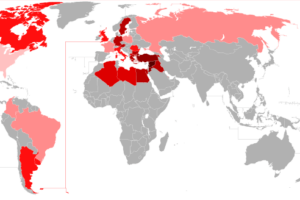
Syrian Refugees Per Capita: Who’s Been The Most & Least Generous
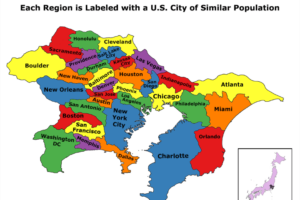
Population of the Metro Tokyo Area Compared To US Cities

World Toilet Paper Map Showing Spending On Tissue & Hygiene
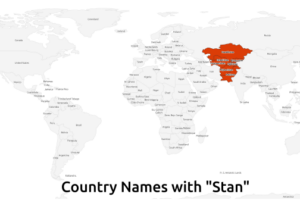
Why The United States Is A ‘-Stan’ Country Like Kyrgyzstan
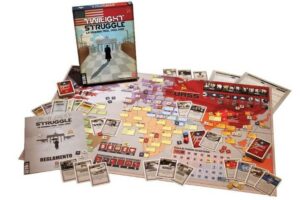
The 28 Best Map Based Strategy Board Games You’ve Probably Never Played

Scratch Map Giveaway: Win 1 of 3 Scratch Off World Maps From Landmass
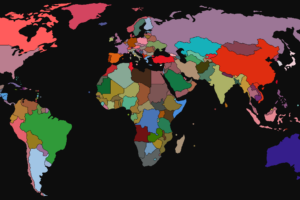
Average Colour Hue of Country & US State Flags
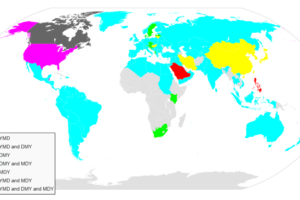
How To Write The Date In Different Countries
December 13, 2017 at 8:14 pm
I know that: a) it’s a bit of fun b) it’s hard to make a 2d map of 3d space and c) there no official maps to go off
But Christ, there’s a lot of stuff on here which makes no sense.
Justin Spaulding says
September 7, 2019 at 2:36 am
Isn’t gamma haromi 2 supposed to be in the haromi cluster…. Good effort though! S3. E8 I think. The “gatherers”
Danny Beans says
November 11, 2019 at 11:18 pm
Why are Ceti Alpha V and Ceti Alpha VI in completely different sectors? I mean, okay, Chekov can be a little dumb sometimes, but that’s one helluva mistake to make.
Jadziah Dax says
April 7, 2021 at 6:03 pm
Can’t wait to see the one you do!
petewinsemiusyahoocom says
November 23, 2022 at 3:47 pm
I agree, several planets said to be in the alpha quadrant are in the beta quadrant and vice versa or not listed at all.
Resolute_Phoenix says
February 8, 2018 at 11:41 pm
Okay so Xindus by Vulcan…. kys I’m not even gona bother looking further don’t make a map if you don’t know what your talking about
February 18, 2019 at 9:03 pm
Romulons should have Dyson sphere (at least at Romulus and Remus). Their ship tech is based on creating black holes which will give a ship a reactor core with a life of a handful of years BUT it’s just like an inefficient battery because it takes way more energy to initially create it then it will give off over its life BUT it’s portable. Sure beats light sails if your depending on home system energy and way more flexible too. This was their tech wheelhouse, and was their interstellar travel energy source instead of antimatter. It makes total sense for them to have harnessed the majority of their native suns energy to create reactor cores wherever they needed a portable energy that couldn’t tap into the system wide grid.
February 22, 2019 at 9:26 pm
A few questions… 1) Why are there several Indus VIII on the map?, 2) I do not see the First Federation on this map — they should be near the Ferengi!, 3) Where is the Kelvin planet? (The planet colonized by the Kelvins from “By Any Other Name”), 4) Maybe I’m wrong, but I do not see the Dyson Sphere that TNG crew ran into?
Shane Montgomery says
March 4, 2020 at 10:25 pm
I don’t see Barzan II or the Barzan Wormhole here?
Pickard says
January 23, 2021 at 3:39 pm
They are there. Literally the only Dyson sphere symbol near the bottom.
August 6, 2019 at 5:03 pm
Spock: He is intelligent, but not experienced. His pattern indicates two dimensional thinking.
Glenn Bryson says
November 15, 2019 at 6:52 pm
Not your fault, I know;
Vulcan is “Supposed” to be “A little over sixteen” light years from earth. Yet the map has it at around 1000. That’s one of my biggest gripes about Star Trek (I absolutely love Star Trek, don’t get me wrong). Distances and travel times are so inconsistent and unrealistic based on the documented scales, maps, etc.
March 14, 2020 at 11:46 pm
Did you mean Starbase 375 instead of 395? As in the starbase from S6 of DS9 after the Dominion took over the station?
Avro Arrow says
March 24, 2020 at 7:04 pm
I love this map, especially how you have the Hydran Kingdom, the Lyran Star Empire and the Kzinti Hegemony are listed (where is the Interstellar Concordium?). I have one small nit-pick to make and that is you have two systems named “Nelvana III”. They’re both in the upspin Beta quadrant but one is in the Romulan Neutral Zone and the other is further upspin and outward (left). I think that you might consider making most of the empty space that is coreward of Klingon and Romulan space into the ISC. They were referred to as being a Galactic Superpower residing on the far side of both those Empires (so, coreward).
Gray.Elton says
May 19, 2020 at 3:21 am
If we do or don’t do it, someone will laugh
July 15, 2020 at 1:53 am
I dont understand how this can be called a map of the star trek galaxy when there isnt even a spot or indication of where earth is. Who makes a map without earth when you have a series where its location is based on earth. In the series they refer to Earth as Earth. Yet the closes thing to it is on the map is Volcan. Y not add Earth as well? If there is an alternative name how come it’s never mentioned in the shows and a secret for fans?
Brandon says
August 15, 2020 at 4:14 pm
Earth is 100 percent there. It’s Sol. It’s a common alternate name for our star system and has been used in Trek.
February 8, 2021 at 3:26 pm
Sol system. The Greek word for sun. Follow the bold line and look for the team Terran and Vulcan sectors. Sol is on the 4 corners there
May 23, 2021 at 11:35 pm
Cheron is not in the Romulan sphere of influence. It is located in the “Southern most part of the Galaxy”, Captain Kirk. Episode “Let That Be Your Last Battlefield”
That dude says
September 6, 2021 at 5:31 am
Issues: Tykens rift, not Titans. Starbase 47 is about 10 sectors off as memory Beta says it is located between the Tholian assembly and the Klingon empire. Prophets Landing is in the gamma quadrant.
That’s all for now!
That Guy says
May 17, 2022 at 11:20 pm
Alpha Onias III is on here multiple times
John S says
November 16, 2022 at 4:31 am
Don’t the Klingon and Cardassian Empires border each other? A lot of DS9 s4 doesn’t make sense if they don’t…
martijn says
March 18, 2023 at 11:16 pm
where is earth ?
Leave a Reply Cancel reply
Your email address will not be published. Required fields are marked *
This site uses Akismet to reduce spam. Learn how your comment data is processed .
2.1.1 The subdivision of the Galaxy
While in our time, we haven't ventured deep enough into space to need other systems for the exact determination of positions within our incredibly large galaxy than the equatorial and galactic coordinate systems, in the world of Star Trek, in which the interstellar navigation is the basis of trade, politics and the everyday life of billions of people, a further subdivision of space is used, beside the much two large division into "galaxies" and the much two small division into "planetary systems" - the subdivision into quadrants and sectors. These two terms, whose meaning was quite contradictious at the beginning, but has been exactly fixed in the meantime, have become a basic element of the space navigation shown in Star Trek through the years, since with the sector and quadrant system, a certain place can be quite precisely localized, without using a complicated coordinate system.
1. The four quadrants
Already in the era of Classic Trek, the expression "quadrant" was used for the exact determination of positions in the Star Trek universe. However, this cartographic term which literally refers to "a quarter" was used for completely different three-dimensional volumes at that time: sometimes a quadrant indeed corresponded to a quarter of the galaxy, but all too often it also denoted considerably smaller regions. In this connotation, the size of a quadrant rather corresponded to the size of a sector, like the designation "quadrant 904" in [TOS] The Squire of Gothos indicates. Up to the beginning of The Next Generation and also in the first movies the "quadrant" wasn't defined unambiguously and was used contradictorily. Finally in Star Trek VI, the current - and correct - quadrant system was introduced, according to which "the galaxy is subdivided into 4 quadrants, from which each forms a 90 degrees piece of cake, viewing the galaxy from the top or the bottom" (Star Trek Encyclopedia). An insider information on this movie even implies that the system was mainly introduced to justify Captain Sulu's claim that "he is in the Beta quadrant and currently the only Star Fleet ship in the quadrant."
Even a subspace transmission (warp 9.9999 with amplification) covers this distance in more than three months. Consequently, only the fact that Earth, the Federation and most of the other empires are located at the frontier between Alpha and Beta quadrant makes it possible that we hear something about other quadrants at all, and it isn't surprising that the two remaining quadrants - Gamma and Delta - were not explored until the era of DS9 and Voyager started, and then only with "tricks" like wormholes and intergalactic displacement waves.
2. The sectors
In contrast to the quadrants, space sectors, that are mentioned in nearly every episode (remember sector 001 - the solar system), are an astronomically small division of the galaxy and therefore more useful for the exact determination of positions in Star Fleet's everyday life - what explains their often use (although, however, in the recent seasons of Voyager and DS9 the Alpha Quadrant was mentioned in every second episode). Because the dimensions of a sector are, in contrast to the quadrants, not important for the episodes and this subdivision was always used for space regions of small scale, it isn't astonishing that the official definition was not determined "first hand" in a episode or movie (not even as background information), but in an official documentation.
At any rate, a sector is apparently not a natural, but a artificial, systematic subdivision of the galaxy into smaller space regions, what is also supported by the Encyclopedia, which suggests that "a typical sector in Federation space contains 6-10 planetary systems, although there are many more in the sectors near the Galactic core." Therefore, Sector 001 should not only contain the solar system, but also e.g. the Wolf and Alpha Centauri systems.
Just as the quadrants, also the sectors have some irregularities in their designation, but that's acceptable in this case, because of the sector numbering system of the Federation, we only know the starting point (sector 001), but not the direction of the numbering, and the situation of the numbered sectors introduced in different episodes towards each other is unknown. However, it is very likely that in view of the centuries of space exploration and already different designation systems today, the system of the Federation is contradictious itself and the sectors are numbered more or less arbitrarily. It is also possible that the sector numbers, like the registry numbers, were assigned to newly discovered space regions at entirely different locations in space with increasing sequence, and the sector system accordingly has a chronological order.
The Star Trek Encyclopedia suggests that "some sectors kept their old designations from earlier cartographing systems the same way as we use today both the older Messier and the newer NGC numbering system." In fact, some sectors apparently haven't a number at all (like the Igo Sector and the Bajoran Sector); they were named after the dominating planetary system or most important star in the sector.
2.1.2 The political division of the Galaxy
Already the mere space explored by humanity - about 5000 ly on both sides of the Alpha/Beta Quadrant border, at which Earth is located, there are six closely adjoined interstellar alliances and empires - Federation, Romulan Star Empire, Klingon Empire, Cardassian Union, Breen Confederacy, the Tholian Assembly and a dozen other important powers such as the Ferengi, Trill, Talarians, Tzenkethi and Gorn. However, actually solely the United Federation of Planets with 150+ member planets, numerous Federation protectorates and hundreds of colonized planets, which are scattered over 8000 ly and distributed to several agglomeration areas ("cores"), is large enough to be visible on an overview map without exaggerated dimensions. Beside the Federation, the sole super power in the (known) lower part of the Milky Way, however, there are more comparably large or even larger powers in the upper half: the Dominion in the Gamma Quadrant, which takes up a whole part of the Sagittarius arm of the Milky Way, and the Borg Collective, which core region has a perhaps five times as large volume than the Federation has, but whose sphere of influence extends over the half Delta and Beta Quadrant. There are still other powers in the Galaxy, but which do not owe their large territories to their political status (like the Federation as a loose, not necessarily spatially joined interplanetary alliance) or their superiority to other species in numbers or technology (like the Borg or the Dominion), but to other factors, which effect the extension of their empires. For example, the Krenim belong(ed) to the dominating super powers in the Delta Quadrant with almost a thousand planetary systems solely due to alterations of the time line, which enlarged their empire and finally made it smaller again. On the other hand, the Hirogen dominate a larger area of space despite their slow ships because of the nomadic way of life which is typical for them - they restlessly travel around to hunt their prey. The Turei inhabit a larger part of the lower Delta Quadrant, because they have access to the sophisticated subspace corridor system of the Vaadwaur. In the end, most peoples have too little influence on other empires or a too less established territory to be called a super power, so that the number of interstellar important alliances is very limited. Finally, the exact political subdivision of the Galaxy remains unknown, because our knowledge is sketchy at best. Only some small parts of the Alpha, Beta and Delta quadrants are known, in which nonetheless the territories of more than a dozen powers are located. The Gamma Quadrant could be explored merely four years, until the Dominion - the sole power known in this quadrant - prevented this. Consequently, there is enough space in the Milky Way for hundreds of interstellar alliances and empires, which could be discovered already with the next deep space mission - the Cytherians, which apparently populate a huge part of the galactic center, are only one example.
After this summarizing introduction in the general subdivision of the Milky Way and the political situation in the Galaxy, now the time has come to immerse in the Star Trek Galaxy and to examine the most important planetary alliances and empires, their location, structure, formation and development more elaborately, starting with the United Federation of Planets.
� 1999-2001 by Star Trek Dimension / Webmaster . Last update: April 27th, 2000
- Movies & TV
- Big on the Internet
- About Us & Contact
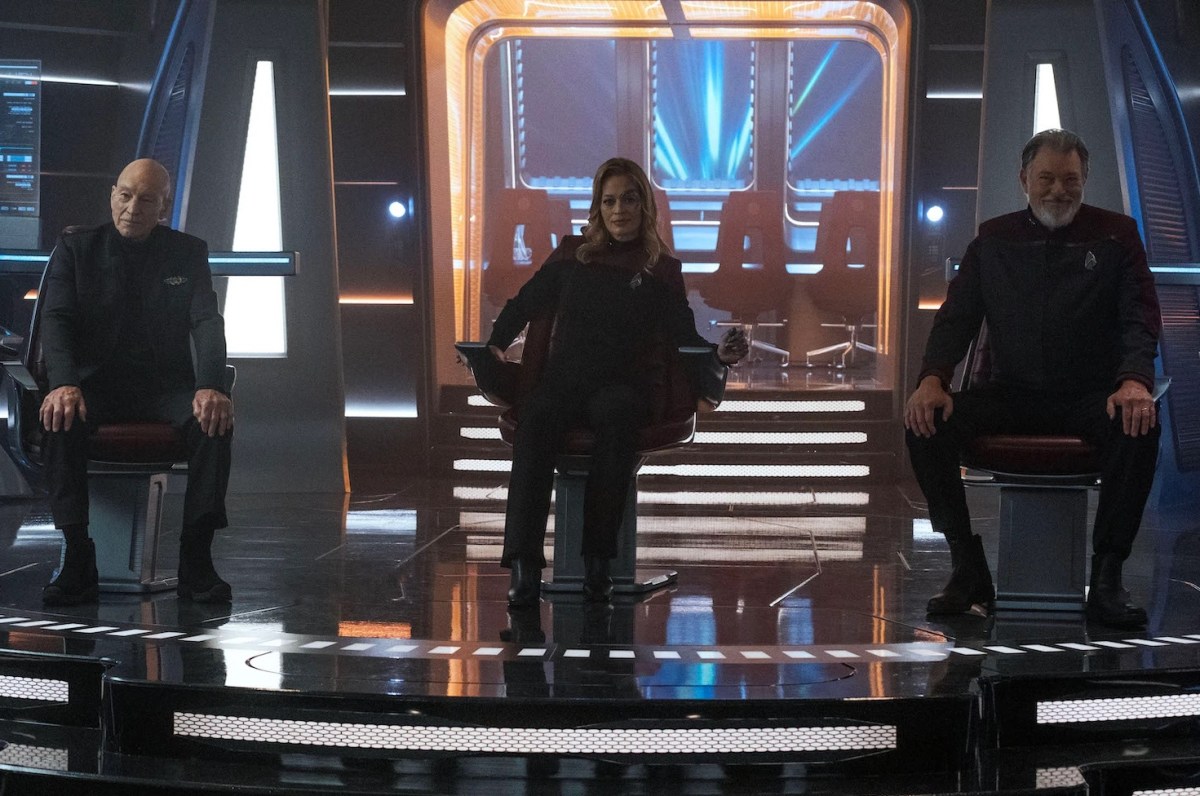
A Wannabe Blue Shirt Officer’s Guide to the Map of the Galaxy in ‘Star Trek’
No matter the fictional universe— be it fantasy or sci-fi or somewhere in between (looking at you, space operas)—I’ve always found maps and cartography one of the most fascinating parts of worldbuilding. There’s something about actually seeing how an author imagines the setting of their story that immediately grounds it in the realm of possibility, and helps immerse viewers in the worlds in which these stories unfold.
Sure, it’s somehow easier when the map consists of a single continent, kingdom, or city on Earth or any other Earth-like location. Bringing the action up into space definitely makes everything a tad more complicated—and a whole lot more fascinating.
And now that the third season of Star Trek: Picard is in full swing , there’s no better time to refresh our collective memory on the “astrogeography” the crews of the USS Enterprise explore.
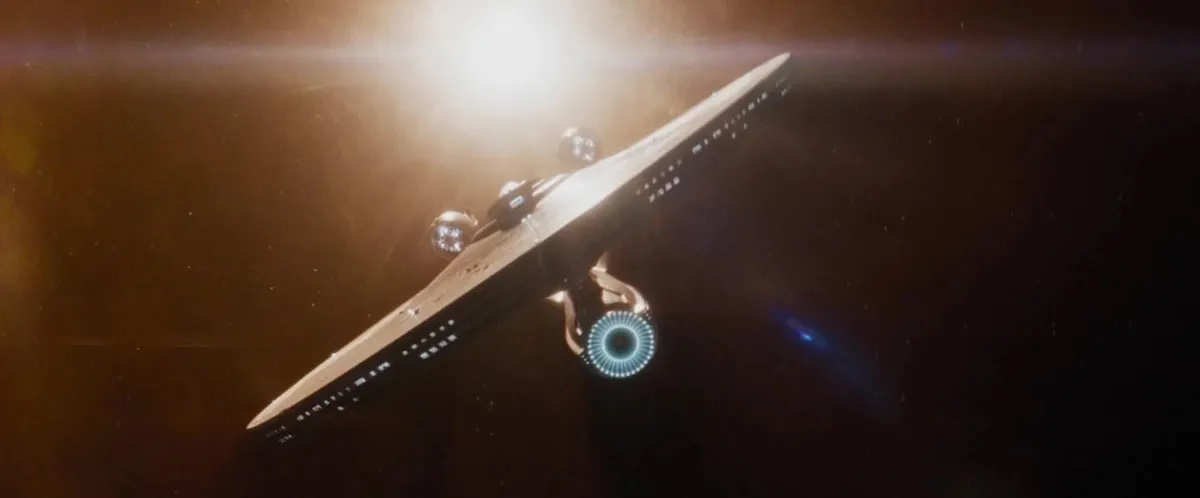
Star Trek and maps
The decades that have passed since Star Trek first premiered on television screens have made it possible for the saga to acquire beautifully complex and detailed lore on pretty much everything related to it—including the planets that make up the United Federation of Planets, and the powers that border it, like the infamous Klingon Empire.
There have actually been several maps made for Star Trek and its locations over the years, as it reads on The Map Room blog . “While original series canon assigned aliens to known nearby stars, and the shows occasionally used real locations, episode writers did not start with a map and generally did not take spatial relationships into consideration, which no doubt has made the belated mapping process a bit more challenging,” The Map Room blog continues, explaining how creating a comprehensive map of the Star Trek galaxy might be easier said than done.
Still, while none of the maps ever put to print or screen have ever been accepted as official canon, most of them have the major power players of the galaxy in more or less the same location. This means we can reasonably assume that this is the actual position in which they can be found in-universe.
The galaxy quadrants
Most of the action in the Star Trek canon takes place within our galaxy, the Milky Way, which has been divided into its famous four primary quadrants, each named after a letter in the Greek alphabet: Alpha, Beta, Gamma, and Delta.
The Alpha and Beta quadrants are the ones that are better known, even in-universe, and that house many of the major players we see throughout the various series—the United Federation of Planets chiefest of all. The Federation has a strong foothold in both quadrants, spanning Alpha and Beta from their shared border outwards.
According to Memory Alpha , the official Star Trek fan wiki, the Alpha quadrant contains two all-important planets that we all know very well: Earth, from which a good majority of the characters in Star Trek canon hail; and Vulcan, the homeworld of the Vulcans and especially of Spock. This quadrant also contains the Cardassian Union, the Ferengi Alliance, and the Breen Confederacy—among other smaller factions—whose representatives make an appearance in the canon, particularly in Star Trek: Deep Space Nine .
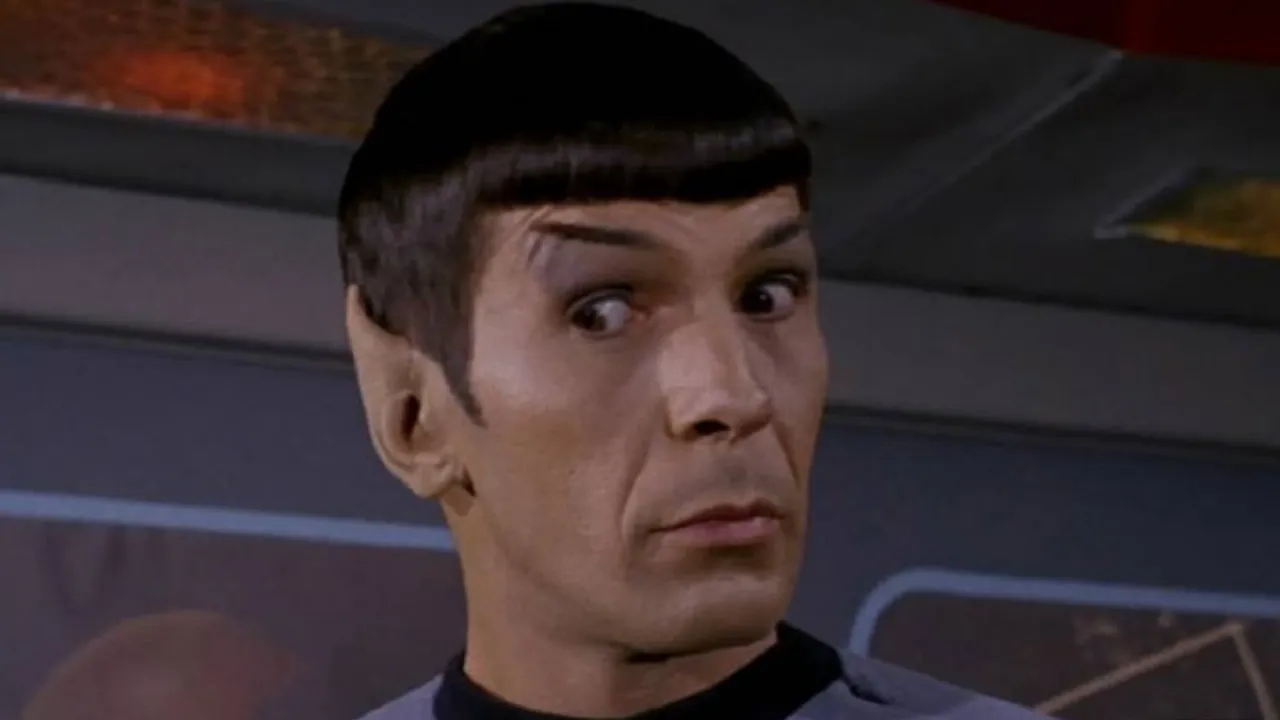
The Beta quadrant includes a couple of relatively smaller players like the Nyberrite Alliance and the Tholian Assembly, and then the major forces of the Romulan Star Empire and the infamous Klingon Empire—who both have their respective homeworlds, Romulus and Qo’noS, in this quadrant.
In contrast to the Alpha and Beta quadrants, the Gamma and Delta quadrants are considerably less well-known and less visited—which makes sense, considering the notable distances that separate them from the other areas of the galaxy, which would require years to bridge even at warp speed. Their reputation also isn’t as stellar as the areas in Federation space.
Still, they are of course mentioned time and again in the canon, as are the planets and people located within them. The Delta quadrant, for example, is the place of origin of the infamous Borg Collective, made up of the terrible Borg cyborgs.
(featured image: Paramount+)
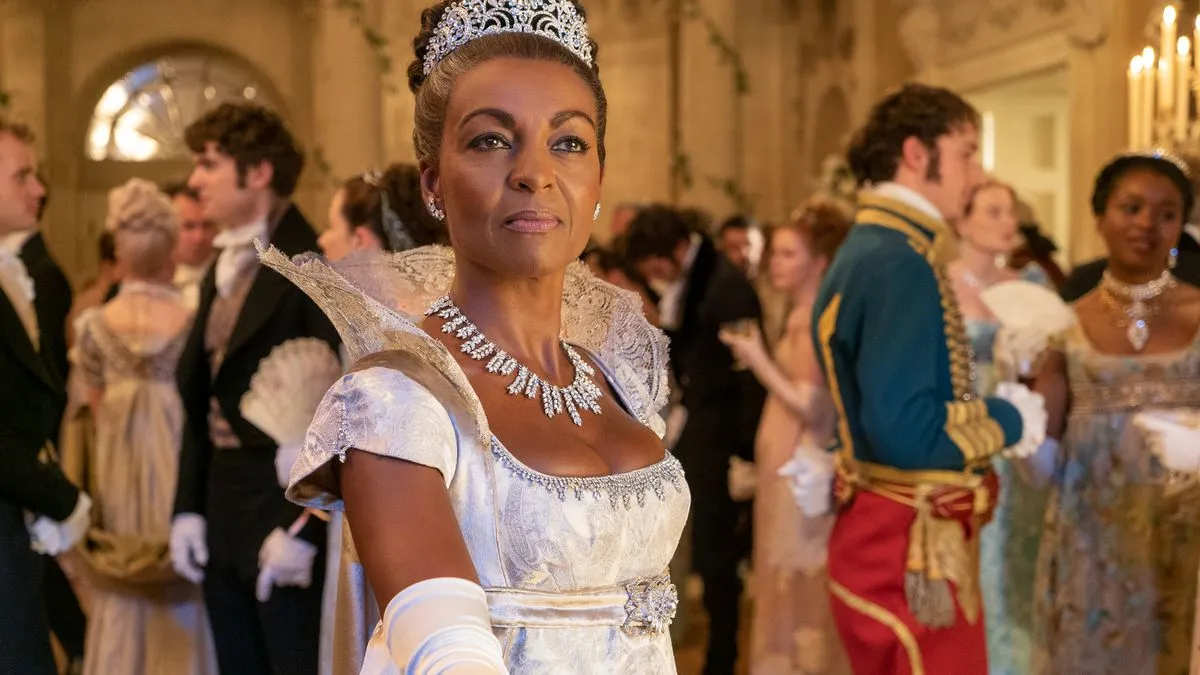
Everything You Need To Know About The Star Trek Quadrants
- Last updated: 28 Apr, 2023
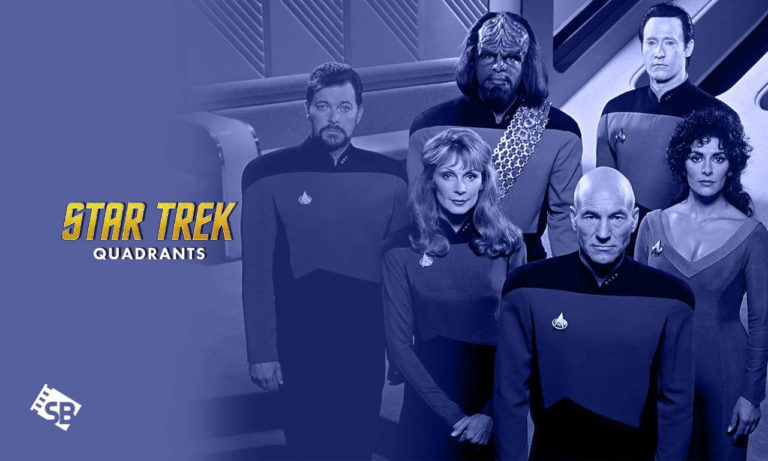
Table of Contents
What Is A Star Trek Quadrant?
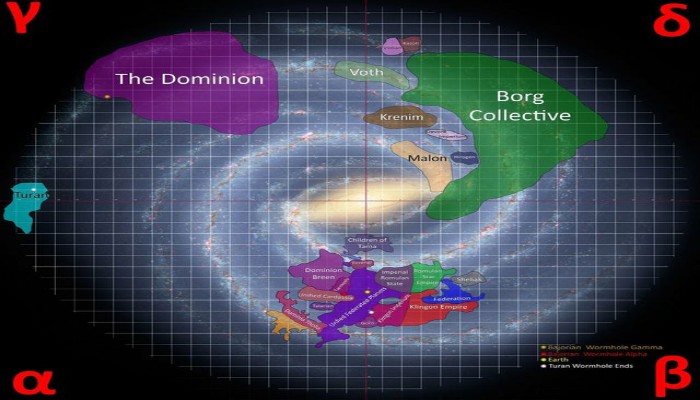
According to the Star Trek Quadrants map in the universe, the “galactic quadrants” are defined by an imaginary meridian that runs across our solar system, which is similar to the concept employed by astronomers.
Instead of going via the Sun as in astronomy, the perpendicular axis in the Star Trek map of quadrants goes through the galactic center.
Accordingly, Star Trek’s quadrant system is less geocentric than normal cartography. In addition, the Greek letters Alpha quadrant star trek, Beta, Gamma, and Delta are used to denote them in the Star Trek galaxy map rather than ordinals, as in the movies.
Star Trek Quadrants Explained
Background Of The Star Trek Quadrants?
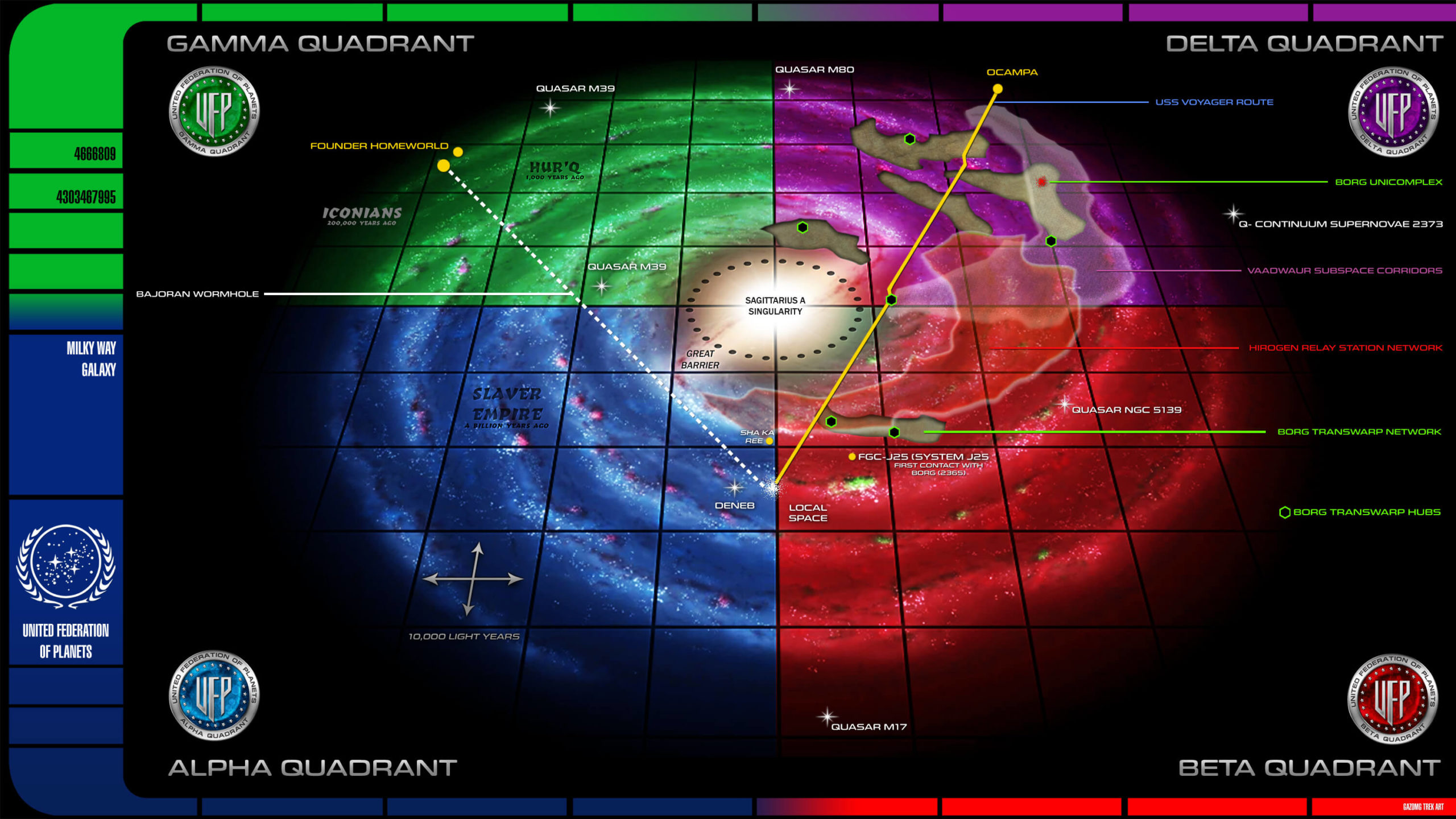
To prepare for the invasion, trans-dimensional entities in the Expanse erected cloaked moons in the area . Their objective was to change the fabric of space in the region, making it hospitable for the Sphere Builders thousands of years ago.
Within a cluster of spheres 700 million kilometers in diameter , a portion of the Expanse has already been transformed into a boiling, organic-looking soup of subatomic particles. One or more spheres provide a command function for the network, which uses artificial intelligence.
As they are hidden, the actual number of spheres is unknown. Thousands of spheres, according to Trianon’s belief. They concluded that there were at least seventy-eight spheres on the star trek Galaxy map and that Degra was one of them.
The Expanse is referred to as the “Chosen Realm” by the Triannons, and their religion is based on the spheres and their mythology. After being stranded in 2037, the spaceship Enterprise from 2154 becomes a generational ship, devoted to fighting the Xindi menace that will emerge in 2150.’s future.’
In 2133, a party of Klingons ventures into the Expanse, only to return anatomically flipped (and still alive). Vulcan ships Seleya and Vaankara also try to investigate the area without success.
The crew of the Seleya, who had been exposed to Trillium-D, were found to be insane and consequently exterminated. Earth’s Starfleet ship Enterprise (NX-01) enters the Expanse in roughly June 2153 in an attempt to find the Xindi.
Later in the year, the Andorian ship Kumari joins the fleet. Reverting twisted space to its original shape and progressively dissolving the thermobaric cloud barrier, the Enterprise destroyed the network of Spheres on F ebruary 13, 2154.
As a result of this, the Expanse fades away into obscurity. Even though a scenario is given to Captain Jonathan Archer of the Enterprise in which the Expanse becomes a significant danger to the future United Federation of Planets , this certainly seems to be removed by the effective destruction of the Spheres. The galaxy is commonly divided into four quadrants, the Alpha Quadrant, the Beta Quadrant, the Gamma Quadrant, and the Delta Quadrant which can be seen if you watch Star Trek movies in order .
Star Trek: The Major Quadrants
According to common belief, the Milky Way Galaxy is divided into four equal-sized cubic quadrants, each defined by a meridian that passes through the galactic center and a second meridian that runs perpendicular to the first and goes through the galactic core.
The four quadrants of the equilateral triangle are known as the Alpha Quadrant, Beta Quadrant, Gamma Quadrant , and Delta Quadrant in mathematics.
The Alpha and Beta Quadrants , respectively, were dominated by alliances with the United Federation of Planets and its bordering powers, such as the Klingon and Romulan Empires.
The Borg Collective and the Dominion , on the other hand, were centered in the Delta and Gamma Quadrants, respectively.
The cosmos appeared to cease to exist for a brief while in the year 2267 when Lazarus and anti-Lazarus began switching places with one another.
Captain Kirk correctly noted in his report that the effects could be felt across the whole quadrant of space. According to Starfleet Command’s Commodore Barstow, afflicted areas covered every quadrant of the Galaxy and far beyond.
Alpha Quadrant
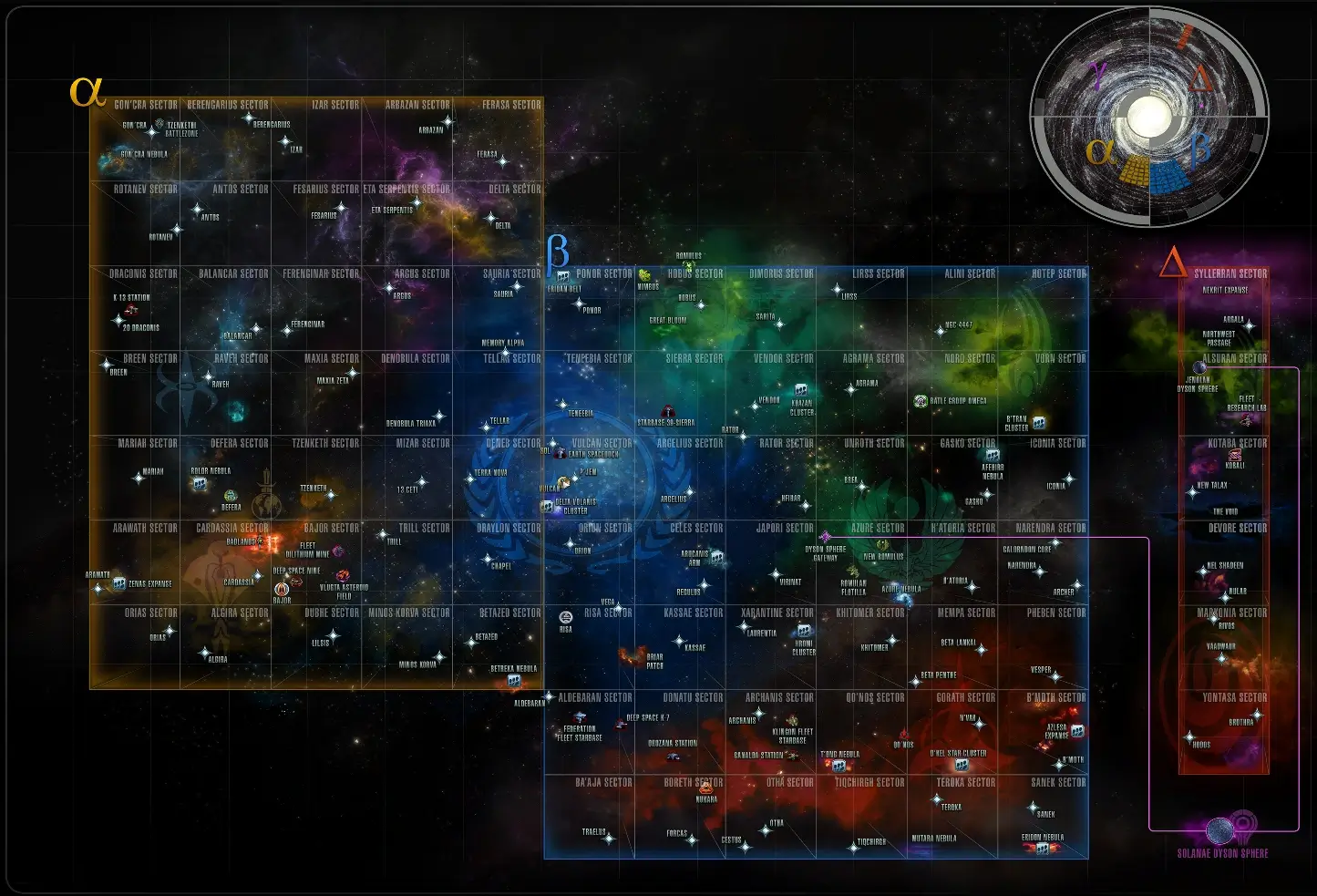
Except for Voyager and Deep Space Nine, the bulk of the franchise’s episodes take place inside the Alpha quadrant of Star Trek of the Galaxy. The planet Earth and a substantial section of the United Federation of Planets may be found here.
Because the planet Earth is situated inside this sector, the great majority of the journey conducted by starships seen in television shows and films takes place within this quadrant.
The Star Trek quadrants, on the other hand, are not bound to a certain area of the Galaxy. This seems to be among the most well-known spot on the face of the planet.
The planets of Trill, Tellar, and Betazed may all be found in this quadrant, along with our solar system, which makes up the whole quadrant.
Some claim that the Alpha sector contains remnants of the Romulan and Klingon civilizations , while others assume the opposite.
Beta Quadrant
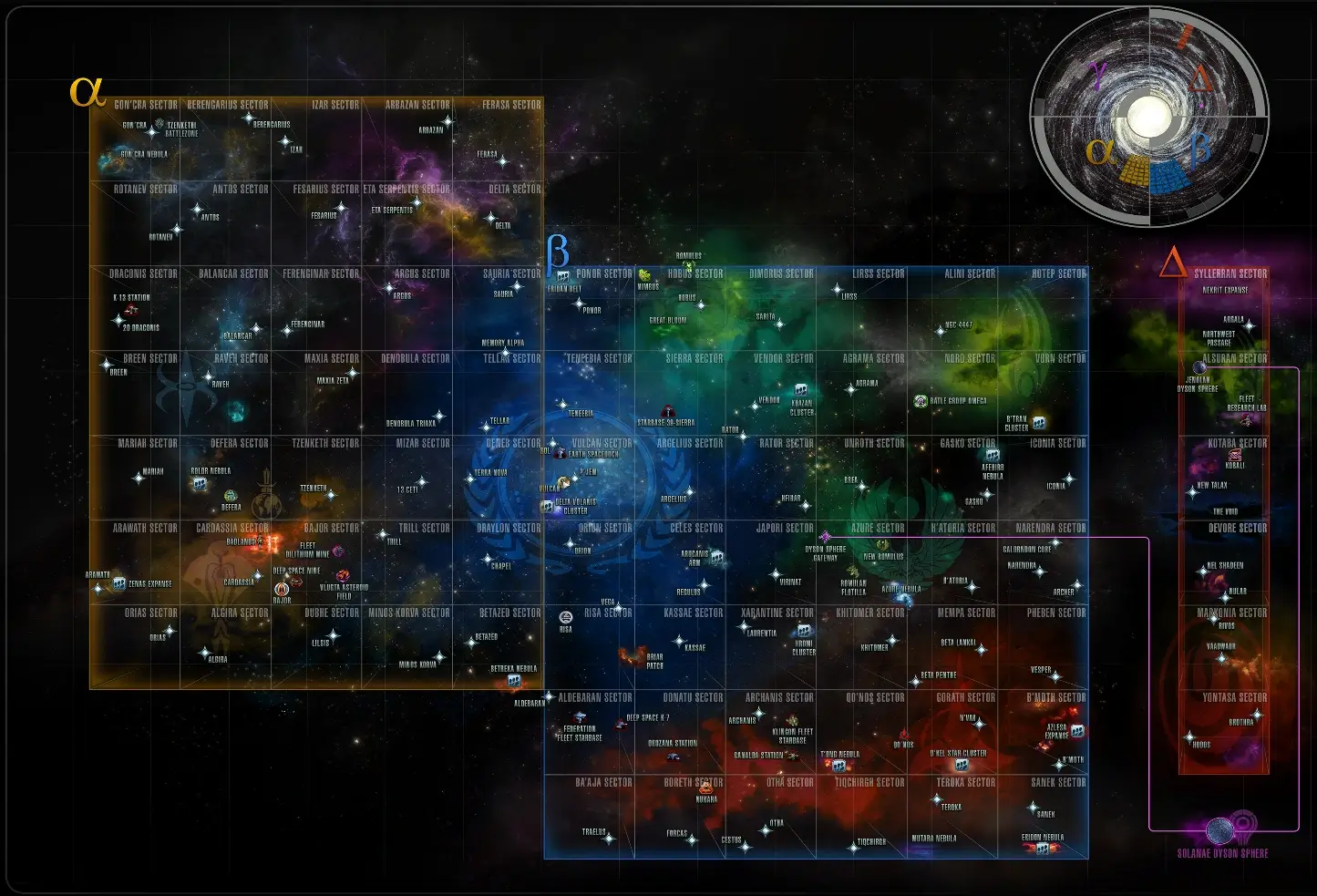
The Beta quadrant contains the rest of the Federation, much as the Alpha quadrant does. This implies that similar to Alpha, many television episodes and movies are set in this sector of the Galaxy.
The vast majority of the Romulan and Klingon empires are concentrated in this area. Beta is also home to Andoria, Risa, Vulcan, and Rigel. Certain publications claim that the Romulan and Klingon empires are entirely contained to a Beta quadrant and do not cross into the Alpha quadrant. These sources are incorrect.
Gamma Quadrant
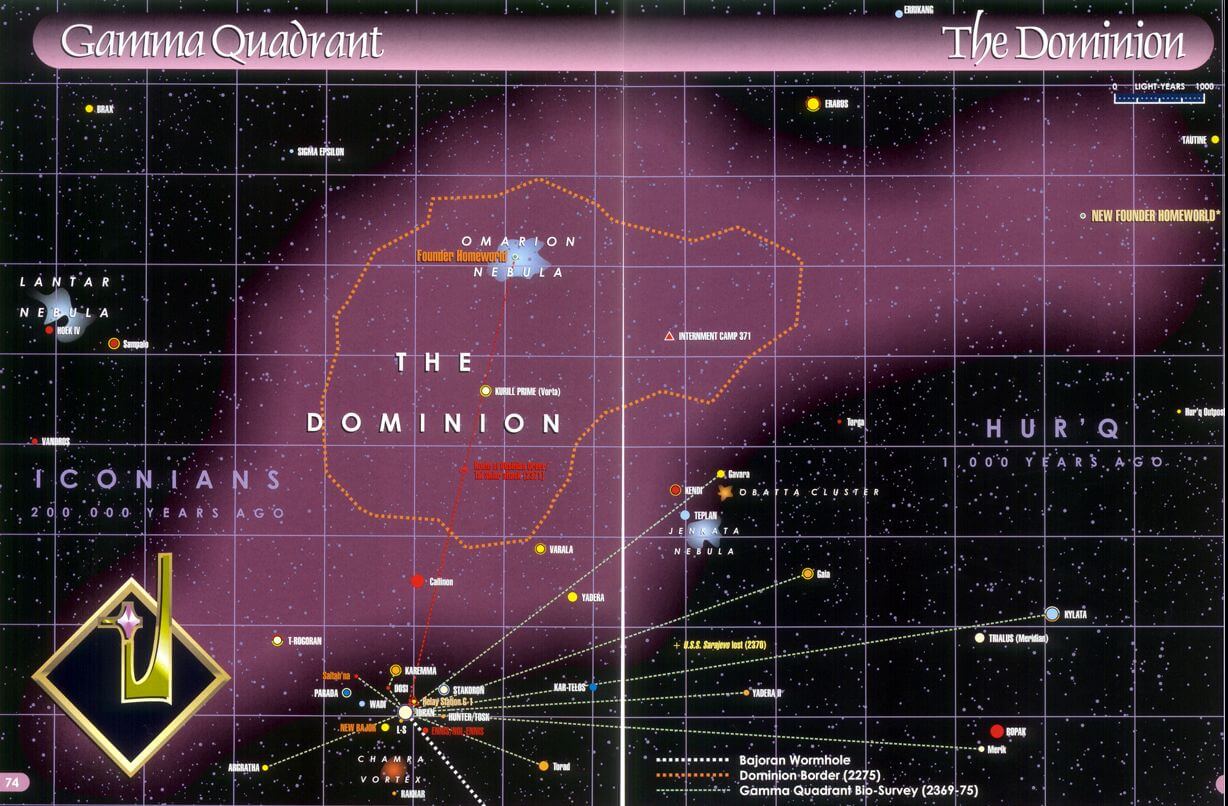
The Star Trek Gamma quadrant was only partially explored until a wormhole was found in the Bajor area in the Alpha quadrant, which allowed for more extensive exploration.
It made it possible for individuals from Alpha to get to Gamma without having to spend years and years traveling.
The Federation was able to communicate with the Dominion via this wormhole, which was dubbed the Bajoran wormhole by the Federation.
This is the foe that we come up against in the television series Deep Space Nine . They are also in charge of the wormhole, which they created.
Delta Quadrant
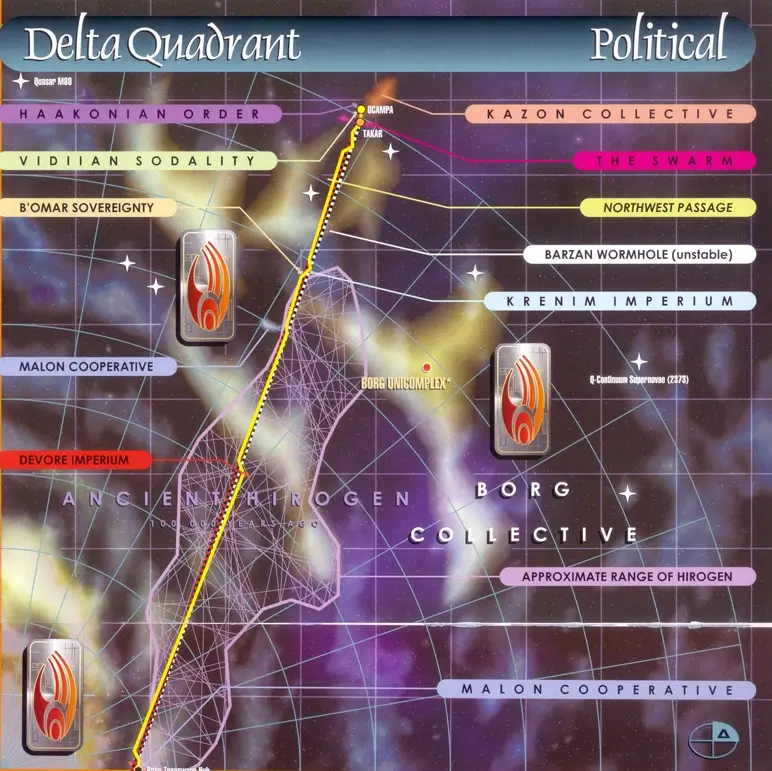
Most of the galaxy’s Delta Quadrant area has gone mostly undiscovered. Reliving their routes back to Earth took the crew of the USS Voyager years to complete.
Return to the beginning location by drawing a straight line from the Alpha and Beta quadrants.
Before the Borg landed in the Delta quadrant, this part of the Milky Way was widely considered to be the home of the Borg. Voyager discovered when returning to Earth that it’s also the homeland of the Kazon, Vidiians, Hirogen, and Species 8472.
Star Trek: The Minor Quadrants
During the 23rd and 24th centuries, smaller parts of space in the Galaxy were called quadrants, which were smaller sections of space inside the Galaxy. Among them were the Quadrant 9, Quadrant 448, Quadrant 904, the Morgana Quadrant, and the Drema Quadrant.
Quadrant 9 is a geographical location in space . This quadrant included a part of the Neutral Zone, which was positioned far enough from Ferengi Alliance territory and protected from attack. As of 2364, there has been no recent evidence of Romulan activity in the area.
Quadrant 448
Quadrant 448 was the site of a renegade comet that had just passed through Gamma Hydra IV in 2267 , according to Stardate 2267 .
Before the present standardization of the quadrant/sector paradigm of celestial cartography, the word “quadrant” refers to a region of the sky.
Quadrant 904
Quadrant 904 was in space in the Milky Way Galaxy, home to several planets. There was a star desert to be found in this area. According to the most recent known data, when the USS Enterprise was first seized by the planet Gothos in this position is 2267, the ship was eight days distant from the planet Beta VI at warp factor three, and Earth was nine hundred light-years away. The Quadrant 904 Central Station served as an embarkation point and a destination for commercial transportation in 2328.

Morgana Quadrant
As per MemoryAlpha , in space, the Morgana Quadrant was a geographical location. Uncrewed Federation ships have already sailed through this area in the early years of the twenty-first century .
During a star-mapping mission that year, the USS Enterprise-D was going to the Morgana Quadrant when it met the lifeform known as Nagilum, a first for the Enterprise-D.
The Enterprise-D was the first human Federation vessel to explore this region when it arrived in 2254 .
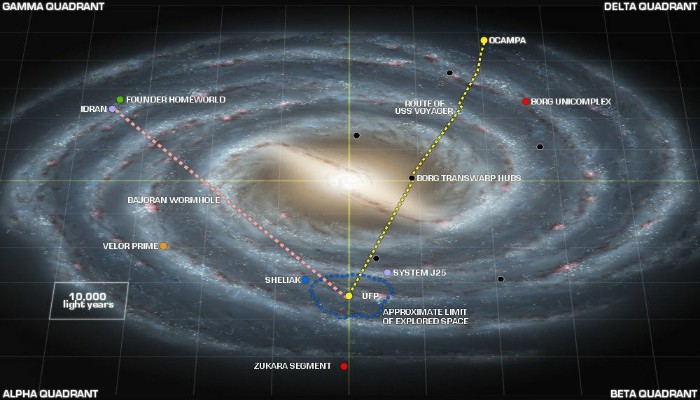
Wrapping Up
In the science fiction television series Star Trek and its spin-offs , a galactic quadrant is a region of the Milky Way Galaxy explored.
The original Star Trek helps to allude to a region that could be interchanged with a sector. Star Trek: The Next Generation and its spin-off programs and films, on the other hand, relate to a system of four galactic quadrants, denoted by the Greek letters Alpha, Beta, Gamma, and Delta in the original series. Each quadrant may be subdivided into sectors, which can be further subdivided.
It’s difficult to estimate the true extent of Star Trek Quadrants because of the large number of variables involved. The human characters in the series have explored a tiny portion of the world.
On the other hand, they have encountered races of aliens that have journeyed around the cosmos, so enlarging it for them. Hopefully, this article has given you a better understanding of exactly how large the Star Trek universe is and how we came to know about it.

Joshua calls himself nerd+geek who is also passionate about rugby. He enjoys comics, animes, and science fiction. He finds his comfort in writing about suspense, thrillers and science fiction shows and movies.
Leave a Reply Cancel reply
Your email address will not be published. Required fields are marked *
- Milky Way Galaxy An overview of the entire galaxy .
- Gamma Quadrant The Gamma Quadrant was first surveyed by the Quadros-1 probe, launched during the 22nd century. After initial discovery of the Bajoran Wormhole in 2369 extensive exploration began, which unfortunately also led to one of the most devastating wars in Federation history: The Dominion War.
- Local Space The extents of the federation space and of many other powers.
- UFP Main Core The Federation Main Core is a extensive map of the Federation's birth place. The founding and many early members are situated here, as well as the Federation's most important trading partners, the major borders to other powers, species and all the core worlds of the Federation.
- 22nd Century (Enterprise NX-01 ) A historical map of the explored space in the mid 22nd century. The destinations of Enterprise's (NX-01) journey can be found here, including the Delphic Expanse and other halts, which ultimately led to the foundation of the United Federation of Planets in 2161.
- Global Location Search Haven't found what you're looking for? Most of the known locations can be searched and hopefully found by simply using the global search for all maps at once, additionally you can still use the local searches which are implemented in every map.
- More to Explore
- Series & Movies
Published Apr 30, 2024
Who Are the Breen?
Never turn your back on the mysterious yet aggressive humanoid species.

StarTrek.com
The Breen are a reclusive and mysterious species whose government has long been considered a major power in the Alpha Quadrant.
Although details about them are often blended with hearsay, we have assembled a helpful briefing to get you up-to-speed on all things Breen.
Political Past
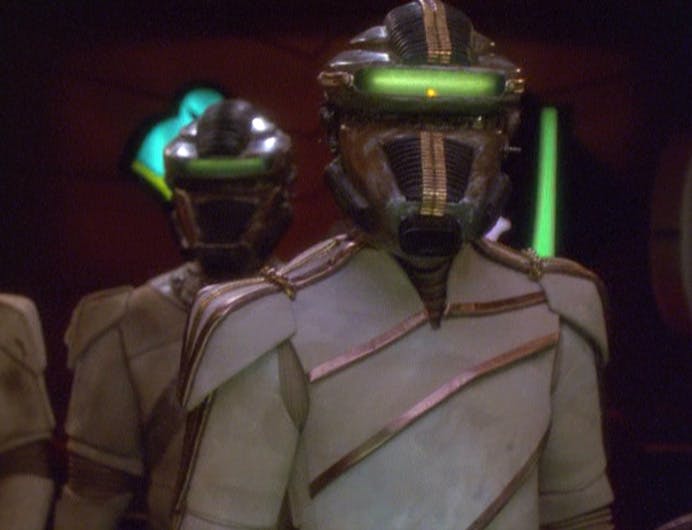
"The Changing Face of Evil"
During the Klingon Second Empire, an entire Klingon fleet was dispatched to conquer the Breen homeworld, but no ships or soldiers ever returned from the mission. This fearsome reputation continued into the 2360s and 2370s, when the Breen were initially considered suspects in an apparent attack on the U.S.S. Vico (in " Hero Worship ") and the Federation's Amargosa Observatory. The Breen also engaged in hostilities against the Cardassians, having destroyed the transport Ravinok and forced the survivors to mine dilithium.
The Dominion confined a Breen in Internment Camp 371 as part of its bid to infiltrate the Alpha Quadrant, but the prisoner was killed in an escape attempt. Given the Breen's clashes with so many other species, it's no surprise that the Romulans allegedly developed the saying, "Never turn your back on a Breen." Oddly enough, the Ferengi had managed to establish a rapport with the Breen and opened trade negotiations with them by 2373.
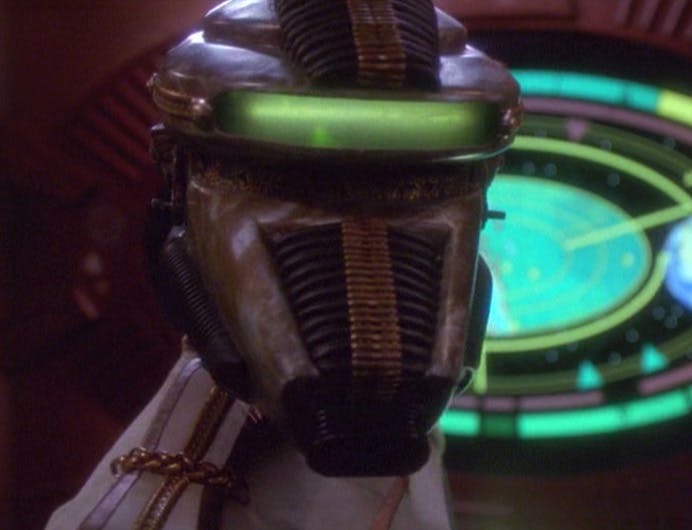
The Breen cover themselves in distinctive full-body suits, and their ever-present helmets mask their appearance from outsiders and process their speech through a metallic filter. Rumors of the Breen homeworld being a frozen wasteland lend credence to the theory that these suits are for environmental or refrigeration purposes, though Weyoun claimed that Breen has a comfortable climate.
Nevertheless, the Breen are often considered synonymous with all things cold by their interstellar neighbors. In the 24th Century, Data stated that the Breen are not detectable through empathic means, while Dr. Bashir noted that they do not have any blood.
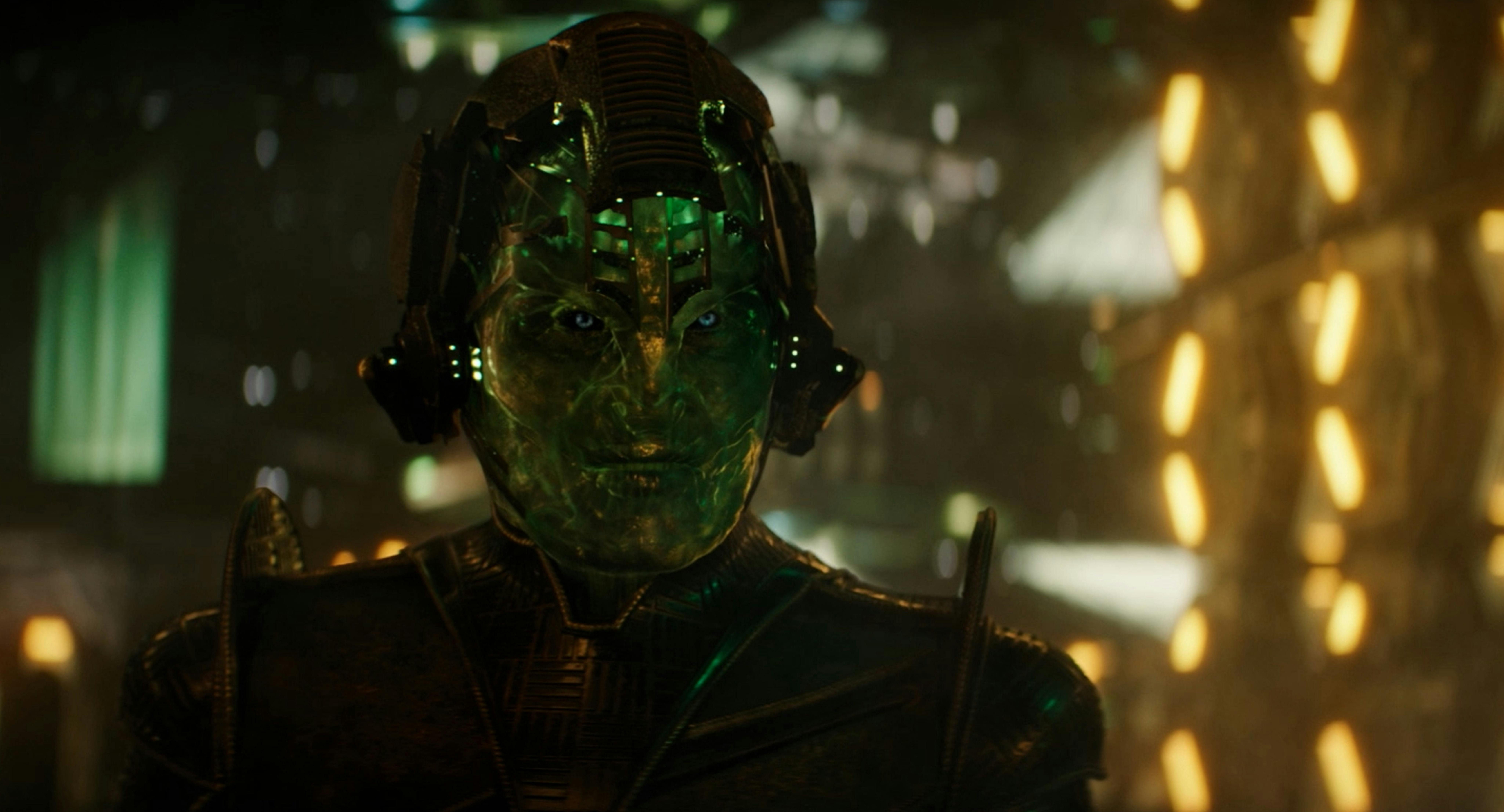
"Mirrors"
According to Worf, no one had ever seen a Breen and lived to tell about it, which explains why the Federation did not immediately recognize the courier L'ak as a Breen in 3191. With the Breen finally unmasked, the species is shown to be capable of changing between two faces — a translucent and emerald-like flexible form, and a smooth, pale-green humanoid one. The latter shape takes focus and strength to hold, but unlike their more radiant appearance, the humanoid variant allows them to breathe the same atmosphere as most Federation species. The fluid that leaks out of a stab wound suffered by L'ak may indicate that Bashir's "no blood" observation is limited to the Breen's "other" face.
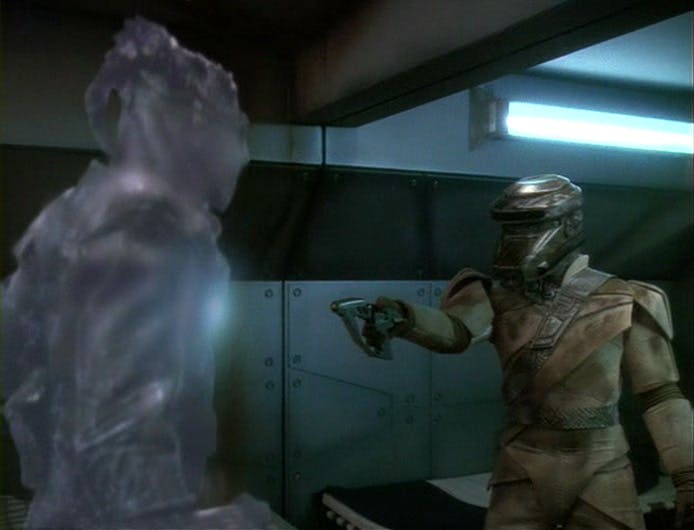
"By Inferno's Light"
As one might expect when dealing with a populace who conceal their faces from other species, the Breen are incredibly secretive. In the 2370s, Worf asserts that the Breen are without honor and do not tolerate incursions into their space matches, while U.S.S. Voyager 's Emergency Medical Hologram classifies them as a warlike species (as mentioned in " Elogium "). These comments reflect the Klingons' failed invasion of the Breen homeworld, but much more insight can be gained from the interaction between L'ak and his uncle, the Breen Primarch, as seen in " Mirrors ."
The Primarch is displeased with L'ak's relationship with Moll, viewing the human as a "lesser being" and showcasing the Breen's intolerance toward non-Breen species. Great emphasis is placed on royal lines and family lineage, with the Primarch referring to L'ak's humanoid face as an insult to his heritage. In the Primarch's opinion, the Breen have evolved past that form as it makes them unfocused, inflexible, and weak. Ordering L'ak to redeem himself by killing Moll and the irrevocable nature of an Erigah — a Breen blood bounty — seem to reinforce the Federation's belief that the Breen are dangerous and cannot be trusted with the Progenitors' technology.
The Dominion War
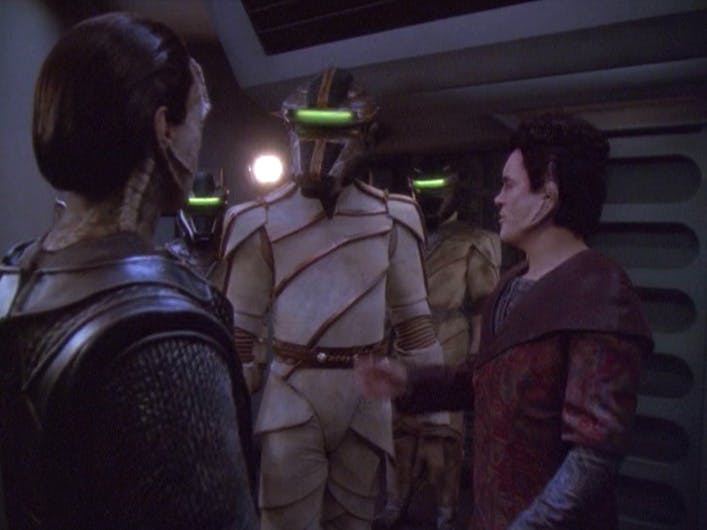
"Strange Bedfellows"
In 2375, Thot Gor allies the Breen Confederacy with the Dominion and quickly musters a fleet that succeeds in attacking Starfleet Headquarters on Earth. Equipped with organic-based ships, the Breen military helps the Dominion retake the Chin’toka system. The favoritism the Founder shows the Breen becomes a factor that pushes Damar into mounting a resistance against the Dominion. Breen energy-dampening weapons devastate enemy ships, though the Federation, Klingons, and Romulans soon devise a countermeasure which permits them to launch an offensive into Cardassian territory.
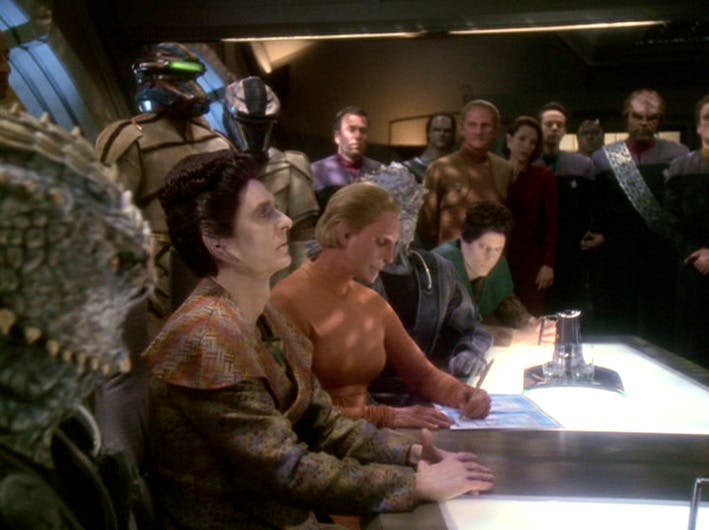
"What You Leave Behind"
With their armada surrounded at Cardassia Prime, the Founder promises the Breen control of Romulus and Earth in a last-ditch effort to motivate them into fighting to the bitter end. The Breen leader vows to join the frontlines, but the Federation Alliance is bolstered by vessels from the Cardassian fleet. The Dominion and Breen Confederacy’s defeat proves inevitable, and the Founder eventually agrees to a complete surrender.
A 32nd Century Future
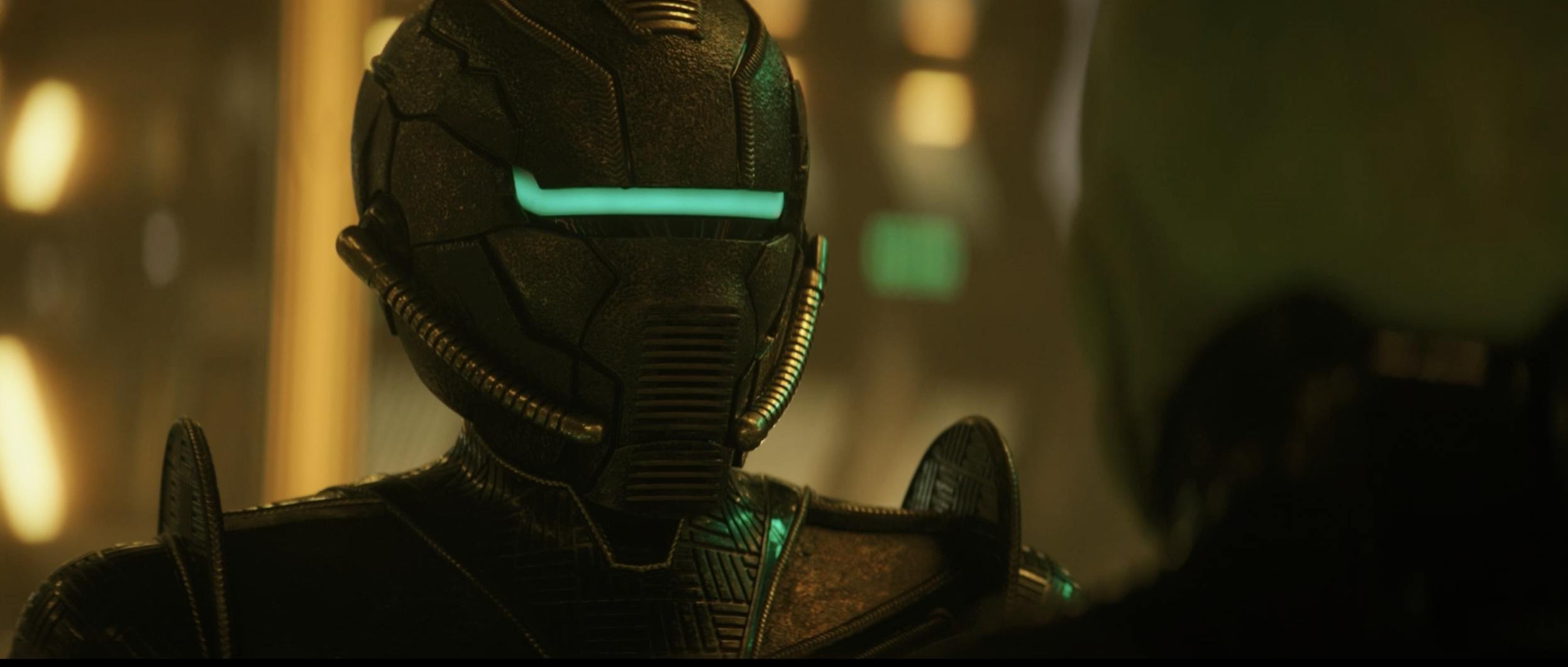
In the late 32nd Century, the Breen government is now known as the Breen Imperium. An independent entity that is separate from Osyraa's Emerald Chain, the Imperium runs its own space stations and trading hubs where couriers can sell their goods. While faction wars between rivals vying for control of Breen space have raged for years, continued infighting over a new leader has made the Imperium a growing threat and alarmed some Federation worlds.
When a time bug overtakes the U.S.S. Discovery -A, as seen in " Face the Strange ," Captain Burnham witnesses a possible future in which the Breen secure the Progenitors' technology for themselves and launch a devastating attack on the Federation. By 3218, the Discovery is found to be adrift and Federation Headquarters has been obliterated. Once back in the year 3191, Burnham uses the glimpse into the future as evidence that the Breen Imperium must not be allowed to obtain the Progenitors' power.
Get Updates By Email
Jay Stobie (he/him) is a freelance writer, author, and consultant who has contributed articles to StarTrek.com, Star Trek Explorer, and Star Trek Magazine, as well as to Star Wars Insider and StarWars.com. Learn more about Jay by visiting JayStobie.com or finding him on Twitter, Instagram, and other social media platforms at @StobiesGalaxy.
Star Trek: Discovery Seasons 1-4 are streaming exclusively on Paramount+ in the U.S., the UK, Canada, Switzerland, South Korea, Latin America, Germany, France, Italy, Australia and Austria. Seasons 2 and 3 also are available on the Pluto TV “Star Trek” channel in Switzerland, Germany and Austria. The series streams on Super Drama in Japan, TVNZ in New Zealand, and SkyShowtime in Spain, Portugal, Poland, The Nordics, The Netherlands, and Central and Eastern Europe and also airs on Cosmote TV in Greece. The series is distributed by Paramount Global Content Distribution.
- Star Trek 101
- Societies and Cultures
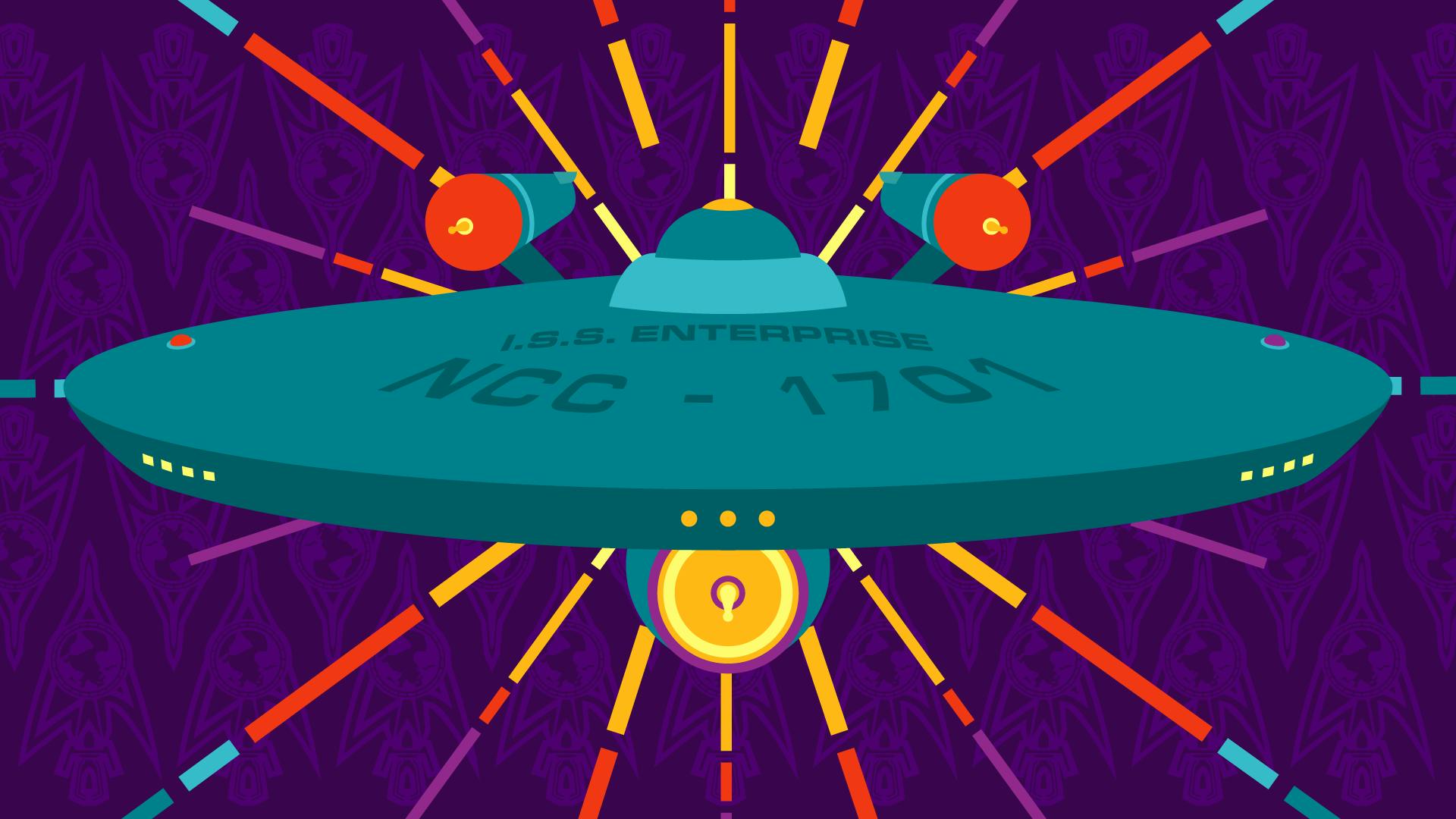
Star Trek: Beta Quadrant, Explained
Beta Quadrant stands out in Star Trek as being the home of races like Vulcans and Klingons. So, what else is going on in this corner of the galaxy?
The Beta Quadrant might be home to some of the biggest political powerhouses of Star Trek , but it has remained a largely unexplored section of the galaxy. In Star Trek VI: The Undiscovered Country , Captain Hikaru Sulu (George Takei) concludes a three-year mission to learn more about gaseous planetary anomalies in the Beta Quadrant. Yet, The Undiscovered Country didn’t show Captain Sulu’s adventures, and thus didn’t show what he and the crew of USS Excelsior learned along the way.
This has left many fans still curious about what it’s like in the Beta Quadrant. It’s not exactly boring, but it’s not at the center of anything notable. High-stakes drama rarely takes place within its borders, unless Starfleet officers are on the verge of being thrown into a Klingon prison or sentenced to death. It’s not at the center of galactic warfare, like the Dominion War in the Gamma Quadrant in Deep Space Nine . It’s not even one of the most talked-about quadrants in the franchise. Yet, the Beta Quadrant is still important to the story, if for nothing else than the variety of galactic races calling it home.
RELATED: Star Trek : Why Did The War Between Klingons And The Federation End?
What Races Live In The Beta Quadrant?
Many Star Trek races reside in the Beta Quadrant. Among them are Andorians, Risians, Bolians, Orions, and the infamous Gorn. Vulcans also call the Beta Quadrant home, which has sometimes been debated against the belief that the planet of Vulcan is actually in the Alpha Quadrant.
Some species, however, are lesser known. The Acamarians of Acamar III, for example, keep to themselves outside a handful of appearances in The Next Generation . Like Humans and Vulcans, Acamarians overcame a long history of violence before entering an era of peace. Those who opposed this evolution became the Gatherers, raiding various outposts before reaching their own peace through Captain Jean Luc Picard (Patrick Stewart) in season 3, episode 9, “The Vengeance Factor.”
The R’ongovians, for their part, left a lasting impression by introducing the concept of “radical empathy” in Strange New Worlds . It’s a type of emotional connection that literally has a person walk in someone else’s shoes to better understand their perspective. Think of T’Pring (Gia Sandhu) hilariously swapping bodies with Spock (Ethan Peck) in season 1, episode 5, “Spock Amok.”
Regardless of the many different species that call the quadrant home, the Federation has been able to establish many starbases and outposts in the Beta Quadrant. One of these is Deep Space 4, where Captain Kathryn Janeway (Kate Mulgrew) went searching for information on Seven of Nine (Jeri Ryan) in Star Trek: Voyager . While the Federation lacks major enemies in the Beta Quadrant, those that exist do so with political force and enough manpower to scare even the bravest Starfleet officers.
The Federation has had bad blood with the Klingon and Romulan governments almost since the beginning of Star Trek . This has made the Federation’s presence in the Beta Quadrant controversial, to say the least. Qo’noS is the homeworld of Klingons at the heart of their system in the Beta Quadrant. Klingons have a passion for violence that has driven many Star Trek storylines, including the time Chief Engineer Montgomery Scott (James Doohan) and Ensign Pavel Chekov (Walter Koenig) got into a fistfight with visiting Klingons on Deep Space Station K-7 in The Original Series .
Romulus is also located in the Beta Quadrant and is the homeworld of Romulans, cousins of Vulcans who left because they disagreed with the lifelong pursuit of achieving perfect logic. Their rivalry with Starfleet got so bad at one point that it inspired the creation of the Romulan Neutral Zone, designed to add extra political padding around pre-existing borders. But instead of decreasing the violence, Romulans often weaponized their ability to hide in the Romulan Neutral Zone after deliberately attacking Federation outposts. It was something of a game of chicken, in space and between highly intelligent adults.
One of the biggest threats to the Federation, though, has been the Borg. While this militaristic collective originated in the Delta Quadrant, they utilized transportation tools in the Beta Quadrant that were eventually destroyed in Voyager . Yet, this isn’t the only thing that’s made the Beta Quadrant so important.
What Is The Significance Of The Beta Quadrant?
The Beta Quadrant wasn’t very prevalent in any Star Trek series outside a few references and notable instances. It did, however, set the stage for conflicts that reached far beyond its borders. In addition to putting hostile governments in shooting range of one another, the Beta Quadrant has strategic significance. The Borg established a transwarp hub and thousands of exit apertures within it to make traveling across the galaxy at a moment’s notice more accessible.
Aside from the Borg, Iconia plays an important role in the Star Trek universe. The Iconians were destroyed centuries prior to Klingons and Romulans, and wereamong many to establish star systems within the Beta Quadrant. They left behind the resource-rich planet of Iconia. In The Next Generation , fighting over the planet’s technology game to a head when Captain Picard had Iconia destroyed once and for all. It was an extreme measure, but not one taken lightly in the face of all the issues between the Federation, Klingons, and Romulans.
It’s easy to dismiss the Beta Quadrant as the least interesting part of the Star Trek galaxy. Despite being the primary location of warring superpowers, not a lot happens within its borders. It’s not like other quadrants that are featured heavily in interesting episodes or exciting movie plots. At the same time, though, space exploration is the heart of any Star Trek project. The whole point is to boldly go where no one has gone before . The Beta Quadrant presents the perfect opportunity for curious science officers to extend their galactic knowledge. Maybe one day a Star Trek storyline will unfold within the Beta Quadrant that’ll leave fans talking about it for years afterward. Until then, the quadrant will have to remain unknown to all but those who call it home.
MORE: Star Trek: Alpha Quadrant, Explained
How Do Star Trek Stardates Actually Work?
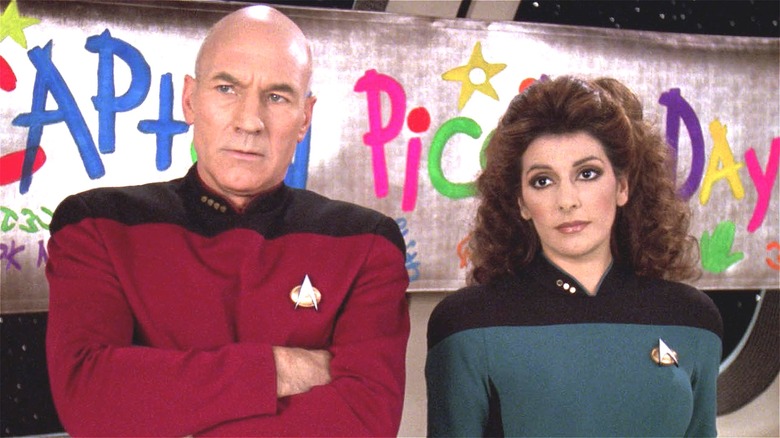
There are few handier delivery mechanisms for "Star Trek" exposition than a Captain's log entry, crucial Starfleet records that mark time with "stardates" — an enigmatic calendar system integrating decimals into each date. Although based on a real-world astronomical dating system, the Starfleet version doesn't make a ton of sense because it was never meant to, which is why the "Star Trek" timeline can seem confusing the deeper you dig into it.
As outlined in a 1967 "Star Trek" writer and director's guide, "The progression of stardates in your script should remain constant but don't worry about whether or not there is a progression from other scripts." Still, understanding the Julian date system can be a good starting point for those who care to try.
Speaking with The Space Review in 2019, "Star Trek: The Original Series" technical advisor Kellam de Forest explained that the futuristic calendar system was inspired by the Julian day — the solar day measurement used in the 365-day Julian solar dating system that predated the Gregorian calendar. Because the Julian day system creates a continued count of dates from the beginning of the Julian period, the ease of calculation between two dates without breaks has made it the preferred calendar for many scientific applications, including astronomical software. Julian dates are calculated by adding the Julian day — that is, the solar day since the beginning of the Julian calendar — and then adding a decimal point to indicate the fraction of the day that has passed since noon in Universal Time Code (UTC). Although the Julian date calculates days running into the millions, only the final five digits are commonly used by astronomers — and just four are used in "Star Trek."
Star Trek's stardates are intentionally difficult to calculate
According to the "Star Trek" writer's guide, the Starfleet calendar system was invented to deemphasize the in-universe date. As the guide puts it, "We invented 'Stardate' to avoid continually mentioning Star Trek's century (actually, about two hundred years from now), and getting into arguments about whether this or that would have developed by then."
Speaking on the 1988 documentary "Inside Star Trek: The Real Story," de Forest emphasized that this almost wasn't the case since the original script contained dates from the Gregorian calendar. Upon reviewing the script, de Forest felt this didn't feel right for the future spacefaring society. As a solution, he pitched the Julian-inspired concept, which the tech advisor felt had a futuristic vibe thanks to its use of decimals.
While "Star Trek" creator Gene Roddenberry liked the concept as a jumping-off point, his version was always meant to be a little esoteric, as Samuel A. Peeples, who wrote the second pilot for "Star Trek: The Original Series," recounted in "Gene Roddenberry: The Myth and Man Behind Star Trek." According to Peeples, "We tried to set up a system that would be unidentifiable unless you knew how we did it." Conceptualizing the revised stardate system over drinks, Roddenberry and Peeples took into account the weirdness of space and relative time, ultimately concluding that any date-related continuity errors in "Star Trek" could be chalked up to these issues. Or as the "Star Trek" writer's guide put it, "Stardates are a mathematical formula which varies depending on location in the galaxy, velocity of travel, and other factors, can vary widely from episode to episode." In other words, don't think too hard about it.

Giant Freakin Robot
Star Trek: Discovery Hides DS9 Connections In Plain Sight
Posted: May 1, 2024 | Last updated: May 2, 2024
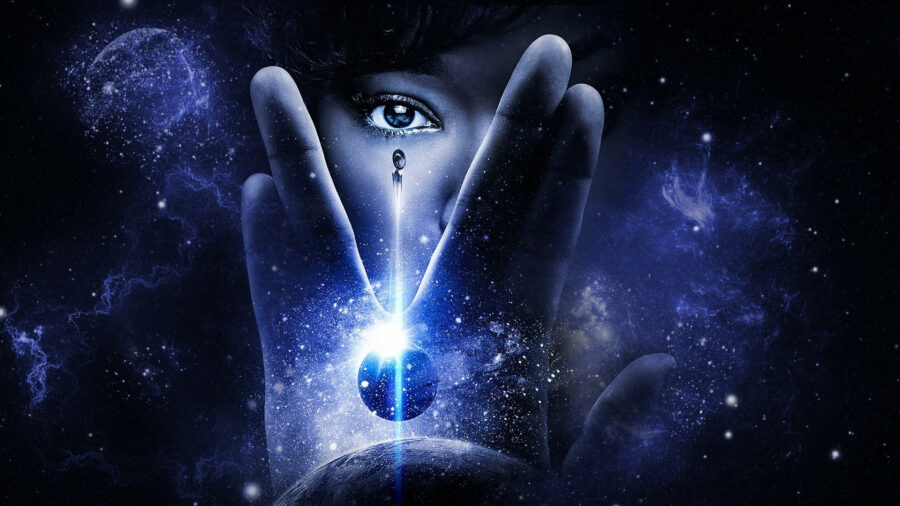
Star Trek: Discovery is in its fifth and final season, and the show has been making frequent messages to other shows in the franchise on its way out. For example, the season-long mystery about the Progenitors is building off of Captain Picard’s research in the TNG episode “The Chase,” and our characters recently discovered the ISS Enterprise from the TOS episode “Mirror, Mirror.” It turns out the Star Trek: Discovery episode “Mirrors” hid a Deep Space Nine reference in plain sight by referencing travels to the Gamma Quadrant, seemingly confirming how important Bajor has remained in the 32nd century.
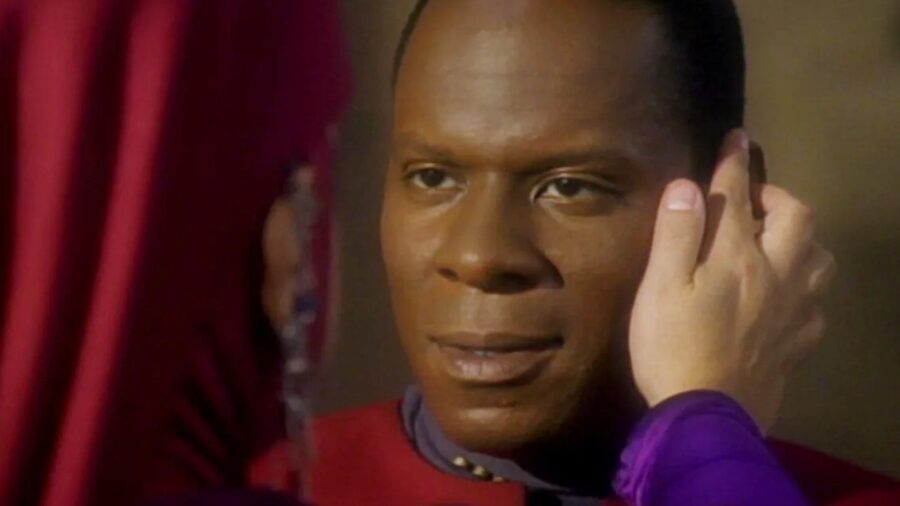
Deep Space Nine’s Game-Changing Wormhole
To understand the importance of this Star Trek: Discovery reference, you need to cast your mind back to the first episode of Deep Space Nine and how much it changed the lives of everyone on the planet Bajor. That was when Sisko reluctantly took command of DS9 to help Bajor rebuild and recover after the brutal occupation by the Cardassians. He discovered a wormhole in Bajoran space that would allow quick and easy travel into the otherwise remote Gamma quadrant.
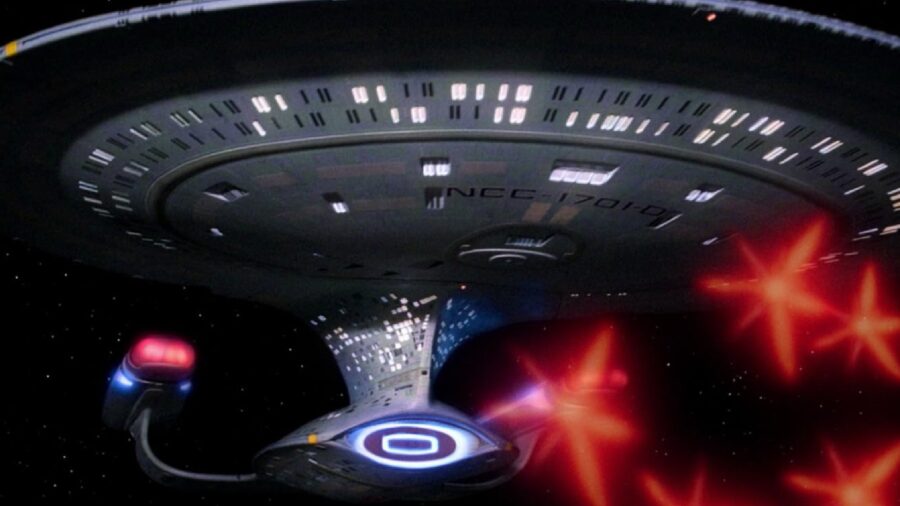
The Importance of Stable Wormholes
An earlier episode of Star Trek: The Next Generation underscored why the discovery of a stable wormhole near Bajor was so important. In the episode “The Price,” the Federation is so excited about the existence of a stable wormhole to the Delta Quadrant that they start bidding against other groups to manage the wormhole (I guess they forgot the whole “we don’t use money” idea that day). Eventually, Geordi La Forge learns that the exit for the wormhole is not stable and that anyone who goes through might not be able to come out, something two Ferengi discover the hard way.
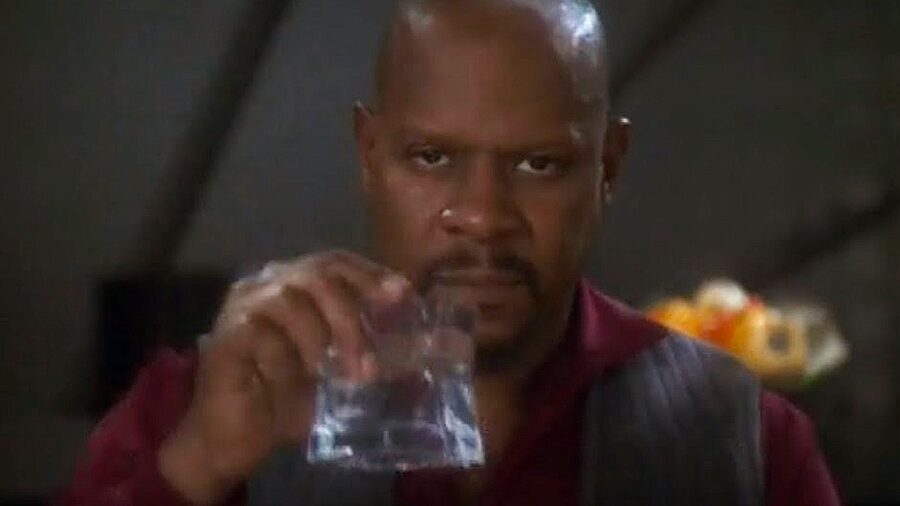
Bajor Transformed Over Time
In Star Trek: Deep Space Nine, Sisko is responsible for the discovery of a wormhole near Bajor that is stable on both sides, allowing travel to and from the Gamma Quadrant. This discovery is a game-changer for everyone involved. Bajor suddenly went from being a galactic backwater to being a hub of commerce and travel. Accordingly, Deep Space Nine went from being a relatively unimportant space station to the most important Starfleet base, especially during the Dominion War.
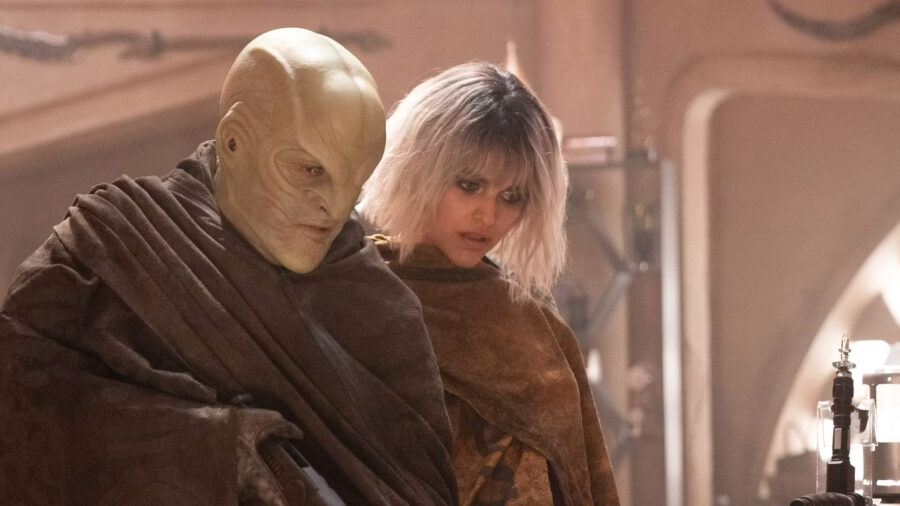
Background on Moll and L’ak
Of course, you’re probably wondering what this Star Trek history lesson has to do with either Discovery or Bajor. The episode “Mirrors” gives us more background on Moll and L’ak, the Bonnie and Clyde duo who always seem to stay one step ahead of Captain Burnham in the race to learn more about the Progenitors. Moll reveals that when she was younger, her father promised to take the family to some kind of colony in the Gamma Quadrant that he considered a safe haven.

Moll’s Motivation
As a now-grown courier and career criminal, one of Moll’s big motivations remains getting enough latinum to start a new life for herself in the Gamma Quadrant. To me, though, the most interesting thing about this Star Trek: Discovery episode was the casual confirmation that Bajor remains extremely important in the 32nd century. Vessels traveling all the way to the Gamma Quadrant would still have to use the Bajoran wormhole, and that phenomenon was likely all the more important during the Burn when dilithium was scarce and warp travel impossible.
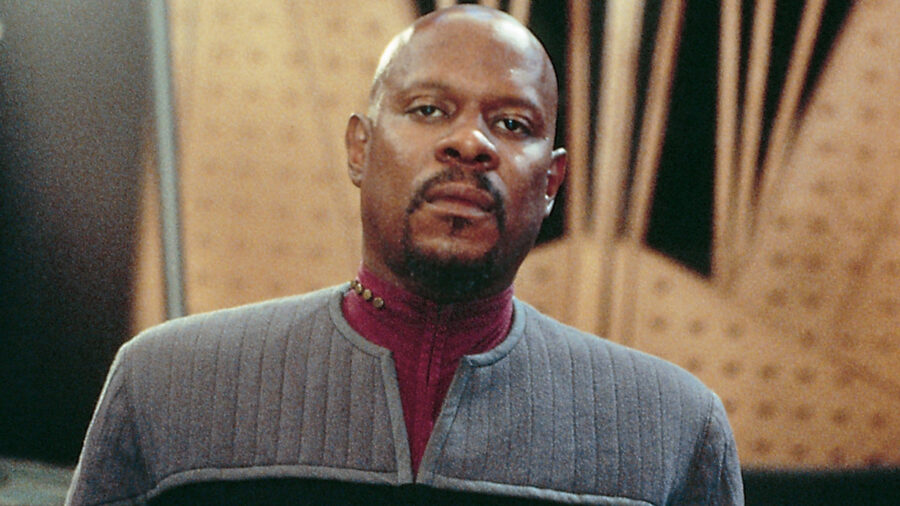
Discovery’s Nod to Bajor’s Significance
While it doesn’t lean as hard into Deep Space Nine fan service as certain episodes of Lower Decks, I was quite happy to see Star Trek: Discovery quietly confirm that Bajor remains one of the most important places in the galaxy. Even in the far future of the 32nd century, this wormhole remains the only way to reliably access the Gamma Quadrant.
And since Star Trek has never followed up on that wild Deep Space Nine finale, it’s entirely possible that Benjamin Sisko is still in that wormhole, having non-linear conversations with the Prophets and, if they’re lucky, sharing his father’s jambalaya recipe.
More for You
The full list of major US companies slashing staff this year, from Tesla to Google and Apple
Joe Biden's Approval Rating Falls To All-Time Low
18 Most Common Reasons Women Leave Their Marriages
18 ‘Normal’ Things From the ’80s and ’90s That Are Considered Luxuries Now
Here’s What the US Minimum Wage Was the Year You Were Born
2024 NBA Playoffs: Winners and losers from Thursday
This humanoid robot currently holds the world record for speed
Employers Are Avoiding Hiring Gen Z Workers- Here's Why
The trickle of companies leaving China is becoming a flood
macOS 15: Release date, AI, features, Mac compatibility, more
15 Traits Of An Alpha Female
Donald Trump Stung by Double Polling Blow
The most expensive state to live in isn't California or New York, based on data. Here are the top 10.
A woman said her tattoos got her rejected for a job, but experts say personality is far more important
4-Time Super Bowl Champ Files for Bankruptcy as Government Sues Him for Alleged $15.5 Million in Unpaid Taxes
Marriage counsellor shares one sign your relationship is really over
17 Phrases Confident People Use When They Want to Be Assertive But Not Rude
What Do All the Heart Emojis Mean? A Guide To Using the Symbols of Love
Housing Market Sees Trend Not Witnessed in Two Years
29-year-old ex-bartender now earns $100,000 working in AI without a college degree—here's how
Screen Rant
Star trek makes enterprise’s doctor phlox species matter in discovery’s future.
Star Trek: Discovery season 5 reveals that the Denobulans are still important allies of the Federation, 900 years after Dr. Phlox in Enterprise.
- "Star Trek: Discovery season 5 uncovers the vital role of Denobulans in Starfleet's future with Dr. Kreel's involvement in the Progenitors' treasure."
- "Entry of Dr. Kreel continues the legacy of Enterprise's Dr. Phlox, highlighting the importance of the Denobulans in the Federation's history."
- "Dr. Kreel's appearance in Star Trek: Discovery reaffirms the presence of Denobulans in the 24th century, bridging the gap between Enterprise and the future."
Star Trek: Discovery season 5, episode 6, "Whistlespeak" reveals that Star Trek: Enterprise 's Denobulan species, popularized by Dr Phlox (John Billingsley), played a hugely important role in the future of Starfleet and the Federation. The latest clue to the Progenitors' treasure is located on the planet Halem'no, a pre-warp planet which has been given a subtle helping hand from the Denobulans. Discovery season 5, episode 6 , written by Kenneth Lin and Brandon Schultz, and directed by Chris Byrne, reveals that Denobulan scientist Dr. Hitoroshi Kreel was one of the five scientists who hid the Progenitors' treasure 800 years ago.
Star Trek: Discovery season 5, episode 6's revelations about the Progenitors' treasure and its link to the Denobulans is a welcome reminder of the species. Star Trek 's most notable Denobulan, Dr Phlox, was a hugely important figure in the 22nd century, serving as chief medical officer aboard the first version of the starship Enterprise . Phlox's adventures on the Enterprise NX-01 helped to establish the rules of the Federation that are still followed almost a millenia later in Discovery season 5. Discovery 's new Denobulan, Dr. Kreel, therefore, continues the legacy of Enterprise 's Phlox .
Star Trek: Enterprise Cast & Character Guide
Why it matters star trek: discovery’s dr. kreel is denobulan like enterprise’s dr. phlox.
The Denobulans were one of several alien species introduced in Star Trek: Enterprise , and were popularized by the character of Phlox. Because Enterprise was canceled , and there were no Denobulan characters seen in Star Trek 's 24th century , there was a risk that the species may have faded into obscurity. Star Trek: Discovery 's Dr. Kreel is proof that the Denobulans were alive and well in the 24th century, and still played a vital role in the affairs of the United Federation of Planets. There is no better example of this than the Federation President's decision to recruit a Denobulan scientist for their top secret Progenitors mission.
Although Star Trek: Discovery season 5, episode 6, doesn't feature Dr. Kreel on screen, he's still an affirmation of Enterprise 's big additions to the canon of Star Trek aliens . The other alien scientists searching for the Progenitors' treasure were all members of iconic species who have played integral roles in shows like the Betazoids from Star Trek: The Next Generation and the Trills from Star Trek: Deep Space Nine . It's fitting, therefore, that one of Star Trek: Enterprise 's Denobulans is also part of this vitally important research group.
Other Denobulans Besides Enterprise’s Dr. Phlox In Star Trek
Although sightings of the Denobulans are rare outside Star Trek: Enterprise , Doctors Phlox and Kreel aren't the only Denobulans who have appeared in the wider franchise . In Star Trek: Lower Decks season 2, episode 4, "Mugato, Gumato", two Denobulan researchers are attacked by a Mugato. In Star Trek: Strange New Worlds season 2, episode 3, "Tomorrow and Tomorrow and Tomorrow", a Denobulan cadet accuses the Enterprise's transporter chief of stealing a ring, a dispute broken up by Lt. La'an Noonien Singh (Christina Chong).
Most notably, Lt. Barniss Frex (Eric Bauza) from Star Trek: Prodigy was the first commissioned Denobulan Starfleet officer depicted on screen. The unfortunate Denobulan became a victim of Prodigy 's Vau N'Akat villains and their Living Construct weapon when the crew of the USS Protostar visited the subspace relay station CR-721. However, Frex blamed the young Protostar crew for his misfortune when he was recovered by Admiral Kathryn Janeway (Kate Mulgrew) and the USS Dauntless. Hopefully, Star Trek: Discovery 's Denobulan scientist will lead to further appearances from Dr. Phlox's species in Star Trek 's future.
Star Trek: Discovery season 5 streams Thursdays on Paramount+.
Star Trek: Discovery
*Availability in US
Not available
Star Trek: Discovery is an entry in the legendary Sci-Fi franchise, set ten years before the original Star Trek series events. The show centers around Commander Michael Burnham, assigned to the USS Discovery, where the crew attempts to prevent a Klingon war while traveling through the vast reaches of space.
Star Trek: Enterprise
Star Trek: Enterprise acts as a prequel to Star Trek: The Original Series, detailing the voyages of the original crew of the Starship Enterprise in the 22nd century, a hundred years before Captain Kirk commanded the ship. Enterprise was the sixth series in the Star Trek franchise overall, and the final series before a twelve-year hiatus until the premiere of Star Trek: Discovery in 2017. The series stars Scott Bakula as Captain Jonathan Archer, with an ensemble cast that includes John Billingsley, Jolene Blalock, Dominic Keating, Anthony Montgomery, Linda Park, and Connor Trinneer.
Star Trek: Lower Decks
"Star Trek: Lower Decks" focuses on the support crew serving on one of Starfleet's least important ships, the USS Cerritos, in 2380. Ensigns Mariner, Boimler, Rutherford and Tendi must keep up with their duties and their social lives, often while the ship is being rocked by a multitude of sci-fi anomalies. The ship's bridge crew includes Captain Carol Freeman, Commander Jack Ransom, Lieutenant Shaxs and Doctor T'Ana. This is the second animated spin-off in the franchise after 1973-74's "Star Trek: The Animated Series," but has a decidedly more adult tone and humor.
Milky Way Galaxy
- View history
The Milky Way Galaxy was one of two trillion galaxies believed to exist. The number of stars it contained was variously estimated to be over three billion to over four hundred billion stars . It generated its own magnetic field , which experienced dips and peaks. The galaxy was 100,000 light years wide. ( TNG : " Pen Pals "; VOY : " Inside Man "; ENT : " Azati Prime "; PIC : " Absolute Candor ")
- 1 Characteristics
- 3 Depictions
- 4.1 Related topics
- 4.2 External links
Characteristics [ ]
The Milky Way Galaxy was theorized to have been created following a great explosion , and it was further theorized that its center might still be creating new matter . This theory was proved correct with the finding of the creation point in 2269 . The core was surrounded by the Great Barrier , containing a planet thought to be Sha Ka Ree by Sybok . ( TAS : " The Magicks of Megas-Tu "; Star Trek V: The Final Frontier )
The rim of the Milky Way's disc was surrounded by a massive energy field of negative energy called the galactic barrier , which makes travel into and out of the galaxy difficult. ( TOS : " Where No Man Has Gone Before ", " By Any Other Name ") By 2369 , the extragalactic space was being charted by starships . ( TNG : " Aquiel ")
In the science of stellar cartography , the Milky Way was divided into four major areas called quadrants : Alpha , Beta , Gamma , and Delta (the first four letters of the Greek alphabet ), each of which composed one-quarter of the galaxy. Each quadrant was divided into thousands of sectors . The Galactic core was the intersection of all four quadrants. ( TNG : " The Price "; Star Trek VI: The Undiscovered Country ; VOY : " Pathfinder ")
In the mid- 22nd century , scientists estimated that one out of every 43,000 planets in the galaxy supported intelligent lifeforms . ( ENT : " Fight or Flight ") Thus, in the galaxy there were millions of planets that could support intelligent life. ( TOS : " Metamorphosis ")
According to Dr. Leonard McCoy , there was a mathematical probability of three million Earth-type planets in the galaxy. ( TOS : " Balance of Terror ")
The Milky Way Galaxy of the mirror universe had the same star readings as its counterpart in the prime universe . ( TOS : " Mirror, Mirror ")
History [ ]
In the 12th century , the Sphere-Builders built a network of spheres in the Milky Way, which created trans-dimensional disturbances as a prelude to invading the Milky Way. ( ENT : " Chosen Realm ", " Azati Prime ")
Between 2064 and 2364 , Humans had charted 11% of the galaxy. ( TNG : " Where No One Has Gone Before ") Within a year , the Federation had charted an additional 8% of the galaxy. ( TNG : " The Dauphin ")
By 2267 , there were Humans on a thousand planets in the galaxy. ( TOS : " Metamorphosis ") That year, James T. Kirk cited a Klingon boast that the Klingon Empire would take over half the galaxy, which Kor accepted. Kor had earlier anticipated that an armed confrontation between the Klingons and the Federation at Organia , which ultimately did not come to pass due to Organian intervention, would decide the fate of the galaxy for the next ten thousand years. ( TOS : " Errand of Mercy ")
By 2268 , research expeditions of the Federation had catalogued hundreds of uninhabited planets suitable for colonization . ( TOS : " By Any Other Name ")
An expedition sent by the Kelvan Empire , from the radiation -imperiled Andromeda Galaxy , scouted the Milky Way for possible invasion in 2268 . ( TOS : " By Any Other Name ")
In 2367 , Centurion Bochra believed that, in a few millennia , the Romulan Empire would span the galaxy, ( TNG : " The Enemy ") following the precept of unlimited expansion . ( ENT : " The Aenar ")
In a potential alternate timeline , by the 26th century the Sphere-Builders had transformed 50,000 light-years of space in the Milky Way, wiping out thousands of planets, before finally being defeated and expelled from the galaxy by the Federation at the Battle of Procyon V . ( ENT : " Azati Prime ")
In a possible 3186 experienced by Gabrielle Burnham , she found every world in the galaxy rendered lifeless by Control . She noted that this represented the loss of tens of trillions of lives. ( DIS : " Perpetual Infinity ")
Depictions [ ]
A map of the Milky Way Galaxy was on display in the security station aboard the USS Enterprise -D in 2365 . This map depicted the lines of longitude. ( TNG : " The Emissary ")
A map of the Milky Way Galaxy was on display in astrometrics aboard the USS Voyager from 2377 through 2378 . ( VOY : " Inside Man ", et al.)
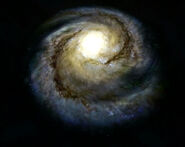
Appendices [ ]
Related topics [ ].
- Species , listing all inhabitant species
- Alpha Quadrant
- Beta Quadrant
- Gamma Quadrant
- Delta Quadrant
External links [ ]
- Milky Way Galaxy at Wikipedia
- Milky Way Galaxy at Memory Beta , the wiki for licensed Star Trek works
- 2 ISS Enterprise (NCC-1701)

Hi, what are you looking for?
TREKNEWS.NET | Your daily dose of Star Trek news and opinion
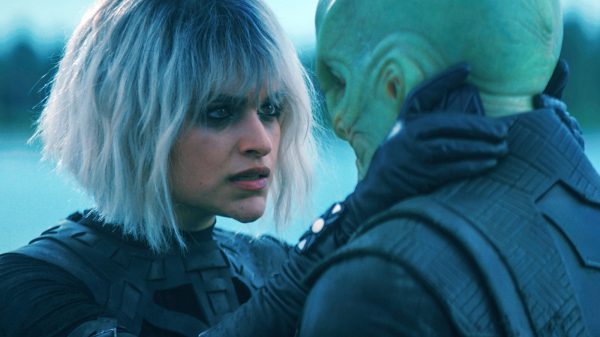
New photos from Star Trek: Discovery Season 5 Episode 4 “Face the Strange”
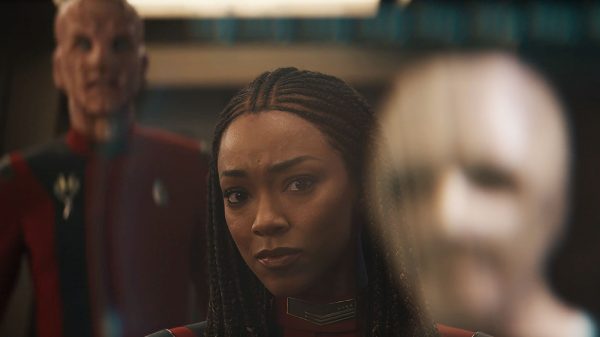
Star Trek: Discovery 502 “Under the Twin Moons” Review: Clues among the moons
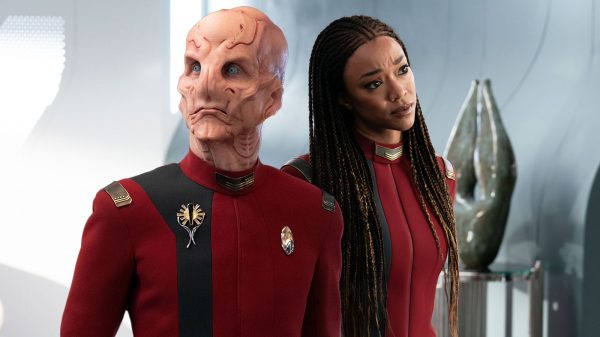
New photos from the first two episodes of Star Trek: Discovery season 5

First Photo from Star Trek: Section 31 revealed, legacy character confirmed
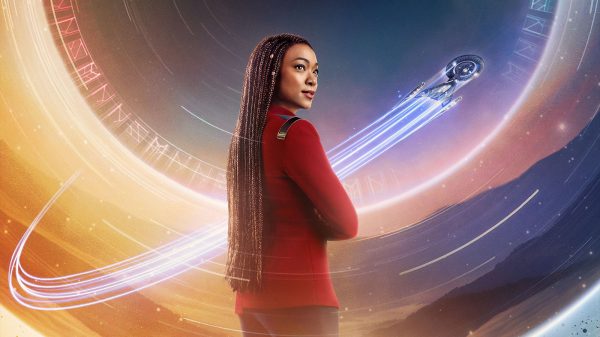
New Star Trek: Discovery posters revealed ahead of final season premiere
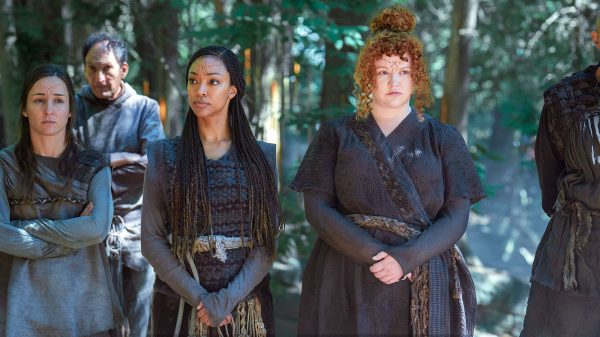
Star Trek: Discovery 506 “Whistlespeak” Review: Decoding the Relationship Between Faith and Technology
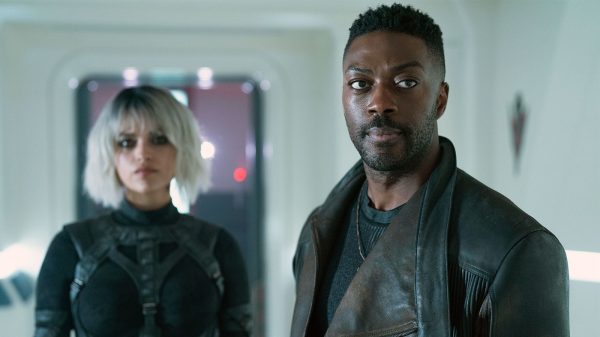
Star Trek: Discovery 505 “Mirrors” Review: Navigating Reflections
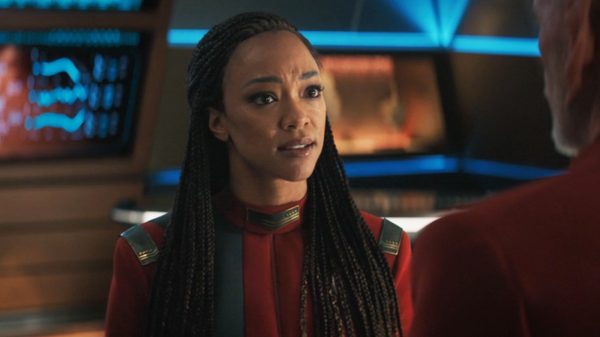
Star Trek: Discovery 504 “Face the Strange” Review: Embarking on a Temporal Odyssey
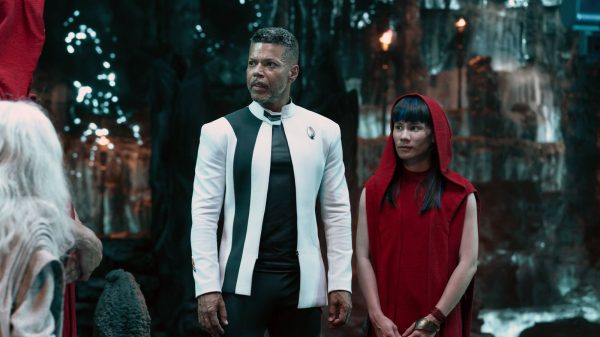
Star Trek: Discovery 503 “Jinaal” Review: One step forward, two steps back
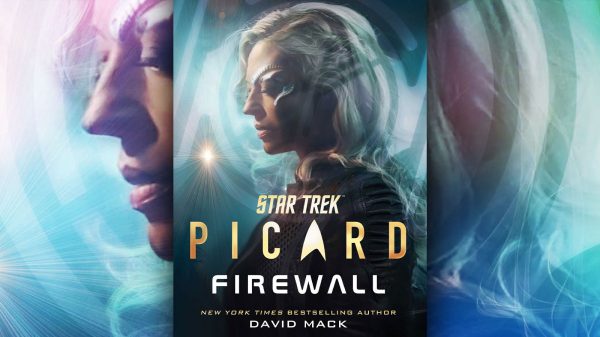
Star Trek: Picard — Firewall Review: The Renaissance of Seven of Nine
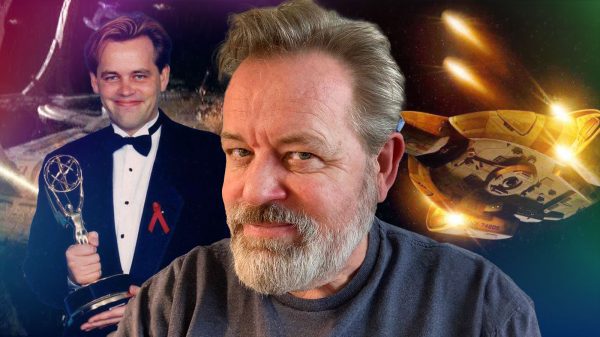
From TNG to Enterprise, Star Trek VFX Maestro, Adam Howard, shares stories from his career
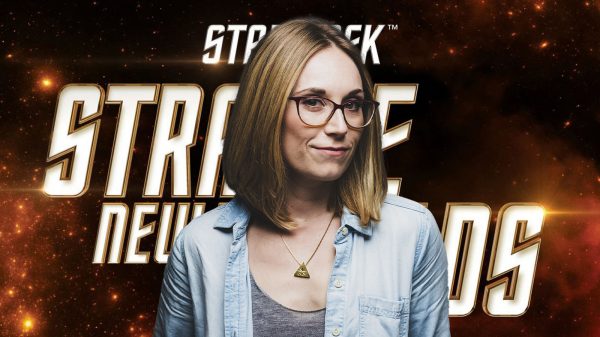
Strange New Worlds director Jordan Canning talks “Charades,” the versatility of the series & Star Trek fandom
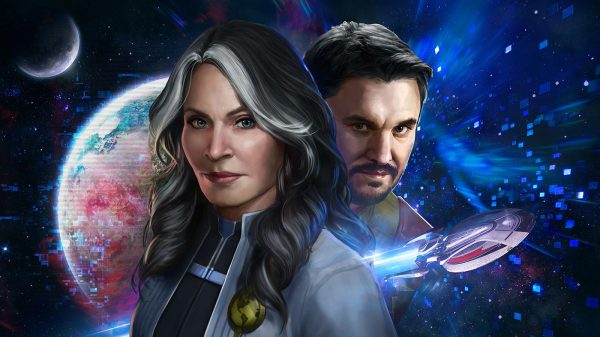
‘Star Trek Online’ lead designer talks the game’s longevity, honoring the franchise, and seeing his work come to life in ‘Picard’

Gates McFadden talks Star Trek: Picard, reuniting with her TNG castmates, InvestiGates, and the Human Condition

Connor Trinneer and Dominic Keating talk ‘Enterprise’, their relationship with Star Trek in 2023 and their first live ‘Shuttlepod Show’

57-Year Mission set to beam 160+ Star Trek guests down to Las Vegas
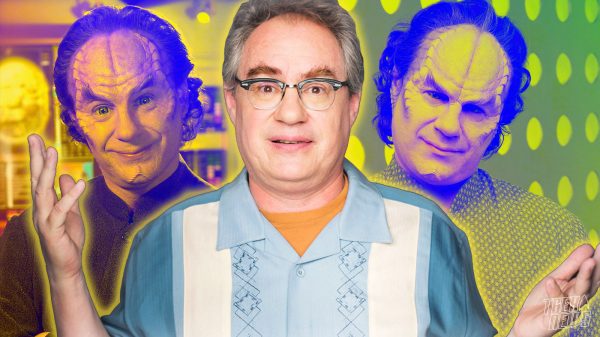
John Billingsley discusses what he’d want in a fifth season of Enterprise, playing Phlox and this weekend’s Trek Talks 2 event
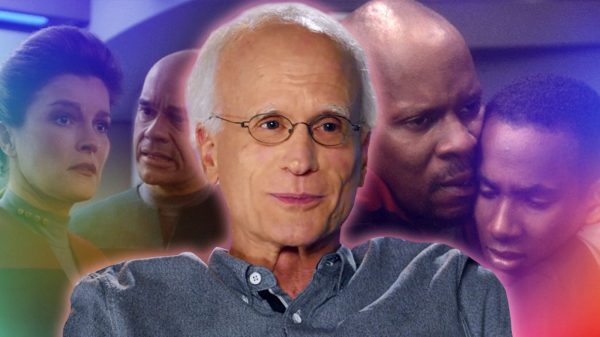
Veteran Star Trek director David Livingston looks back on his legendary career ahead of Trek Talks 2 event
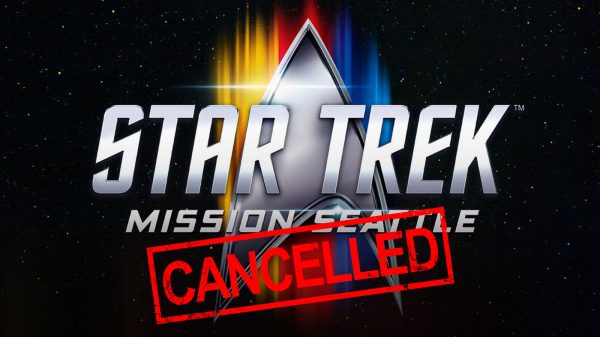
ReedPop’s Star Trek: Mission Seattle convention has been cancelled

56-Year Mission Preview: More than 130 Star Trek guests set to beam down to Las Vegas convention

New photos + video preview from Star Trek: Discovery Season 5 Episode 6 “Whistlespeak”
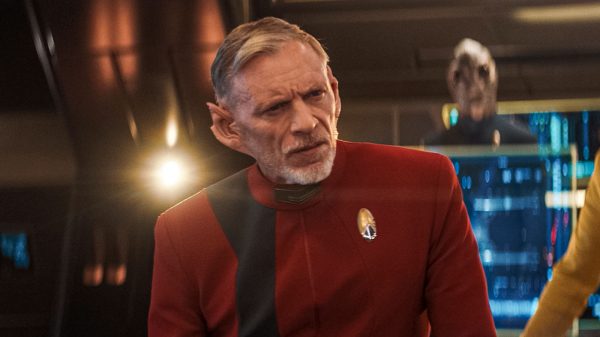
New photos + video preview from Star Trek: Discovery Season 5 Episode 5 “Mirrors”
![star trek space quadrants 2023: A banner year for Star Trek — here’s why [Op-Ed]](https://treknews.net/wp-content/uploads/2024/01/star-trek-2023-year-in-review-600x337.jpg)
2023: A banner year for Star Trek — here’s why [Op-Ed]

‘Making It So’ Review: Patrick Stewart’s journey from stage to starship
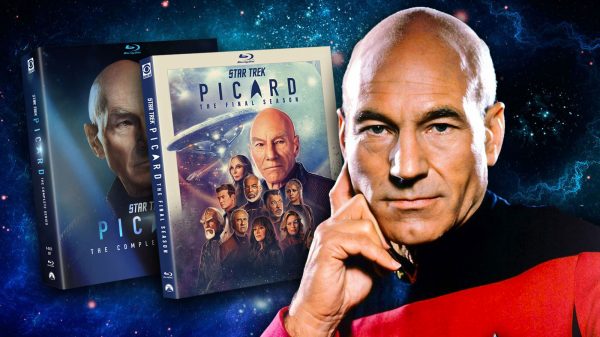
54-Disc Picard Legacy Collection, Star Trek: Picard Season 3, Complete Series Blu-ray box sets announced
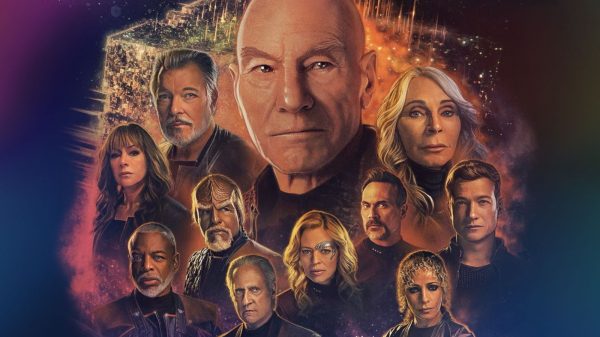
Star Trek: Picard series finale “The Last Generation” Review: A perfect sendoff to an unforgettable crew
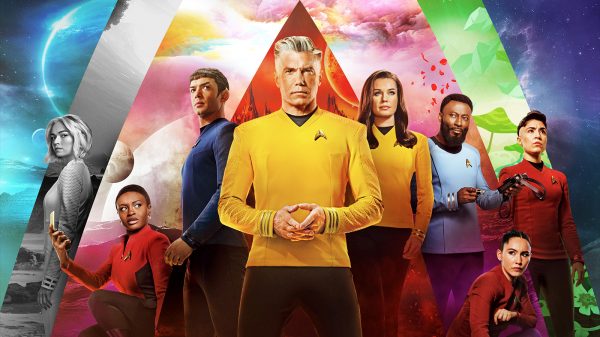
Star Trek: Strange New Worlds arrives on Blu-ray, 4K UHD and DVD this December
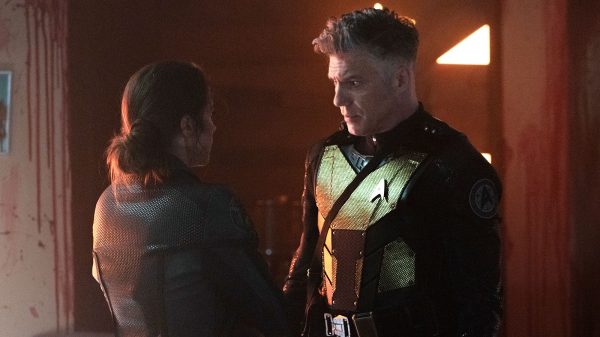
Star Trek: Strange New Worlds “Hegemony” Review: An underwhelming end to the series’ sophomore season
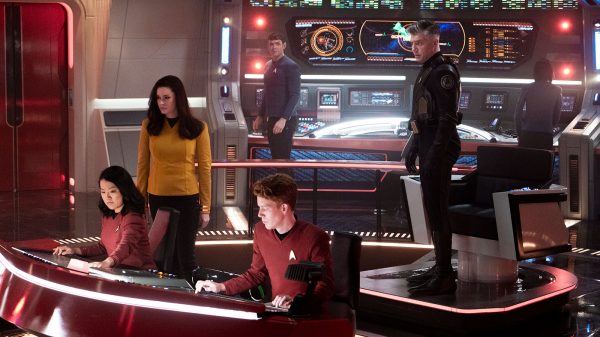
Star Trek: Strange New Worlds season 2 finale “Hegemony” preview + new photos
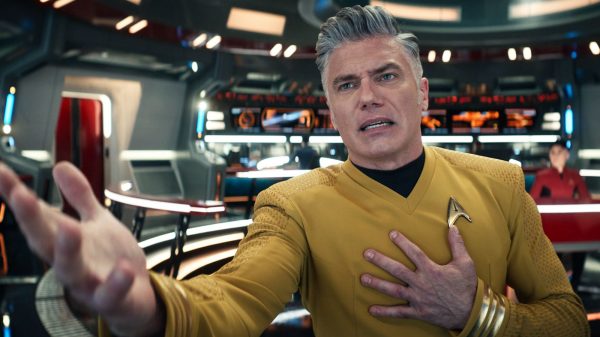
Star Trek: Strange New Worlds 209 “Subspace Rhapsody” Review: All systems stable… but why are we singing?
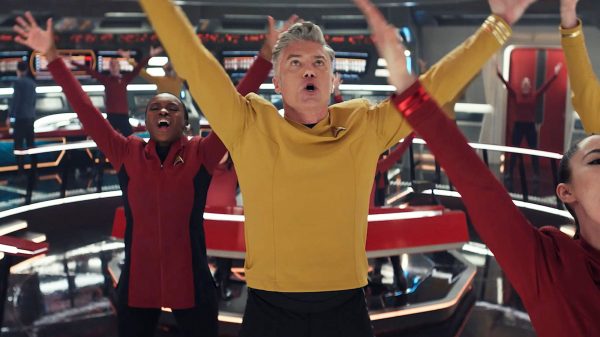
Star Trek: Strange New Worlds “Subspace Rhapsody” preview + new photos
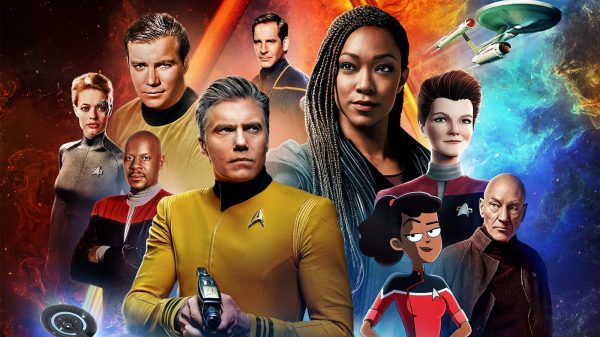
Star Trek Day 2021 to Celebrate 55th Anniversary of the Franchise on September 8 with Live Panels and Reveals

Paramount+ Launches with 1-Month Free Trial, Streaming Every Star Trek Episode
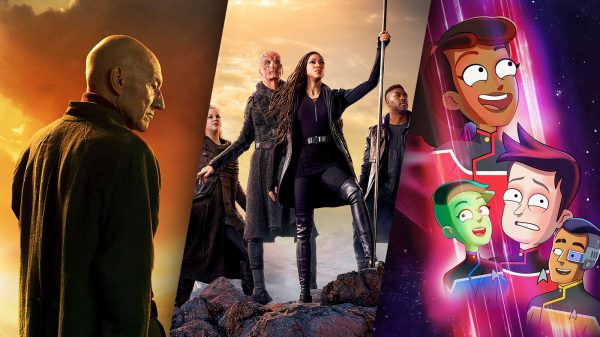
Paramount+ to Officially Launch March 4, Taking Place of CBS All Access
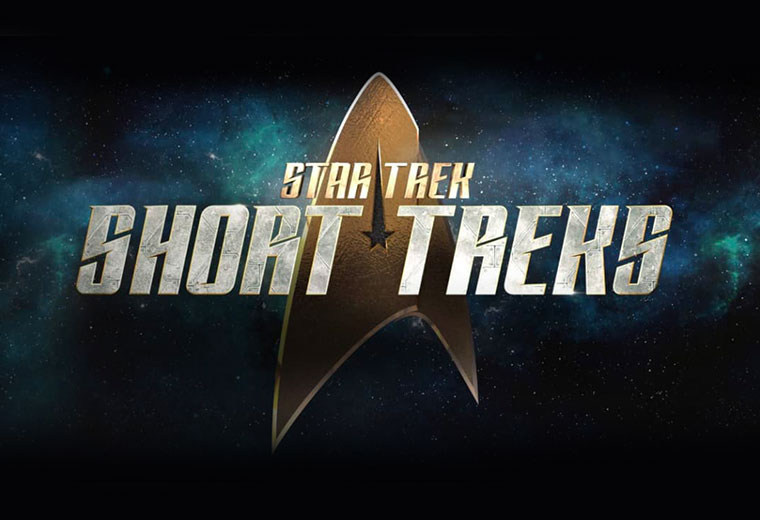
STAR TREK: SHORT TREKS Season 2 Now Streaming For Free (in the U.S.)
![star trek space quadrants [REVIEW] STAR TREK: SHORT TREKS "Children of Mars": All Hands... Battlestations](https://treknews.net/wp-content/uploads/2020/01/review-star-trek-short-treks-children-of-mars.jpg)
[REVIEW] STAR TREK: SHORT TREKS “Children of Mars”: All Hands… Battle Stations
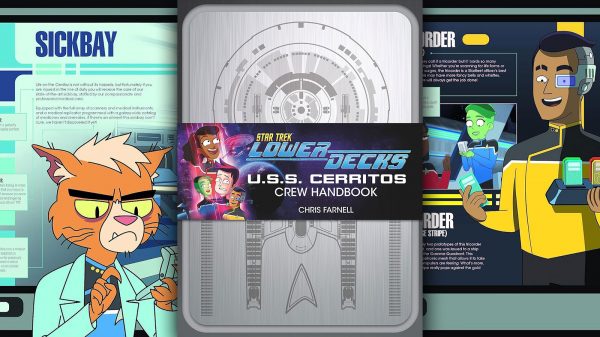
‘U.S.S. Cerritos Crew Handbook’ Review: A must-read Star Trek: Lower Decks fans
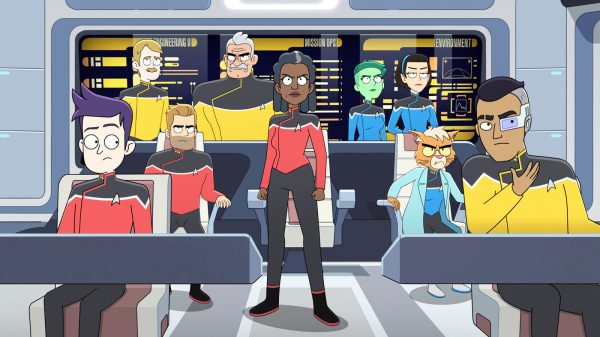
New photos from this week’s Star Trek: Lower Decks season 4 finale
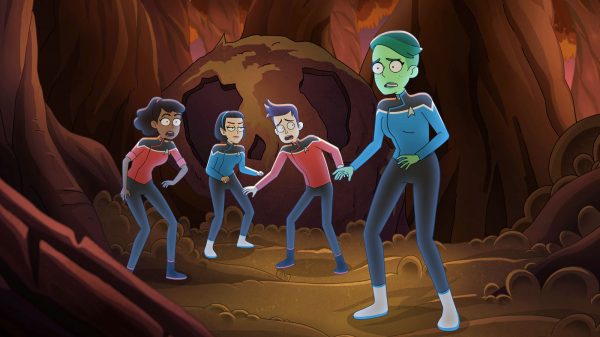
Star Trek: Lower Decks “The Inner Fight” Review: Lost stars and hidden battles
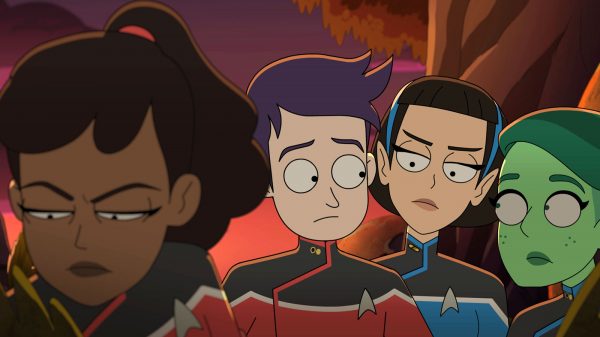
New photos from this week’s episode of Star Trek: Lower Decks
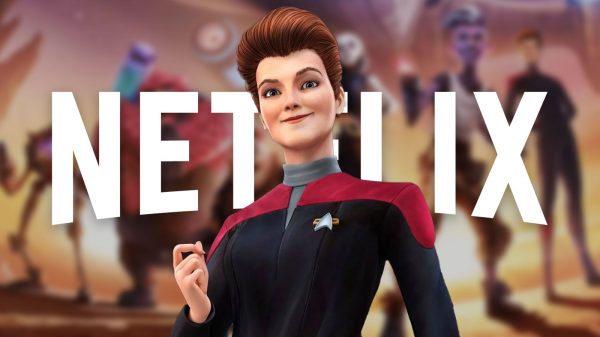
Star Trek: Prodigy begins streaming December 25th on Netflix
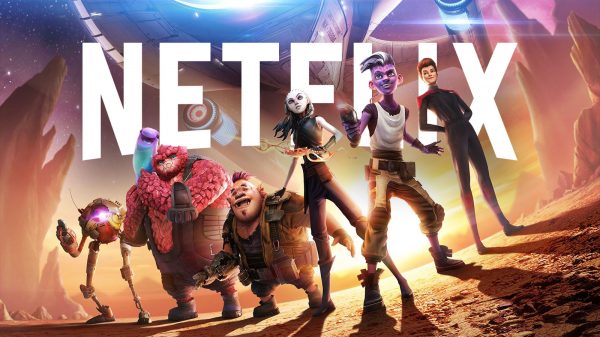
Star Trek: Prodigy lands at Netflix, season 2 coming in 2024
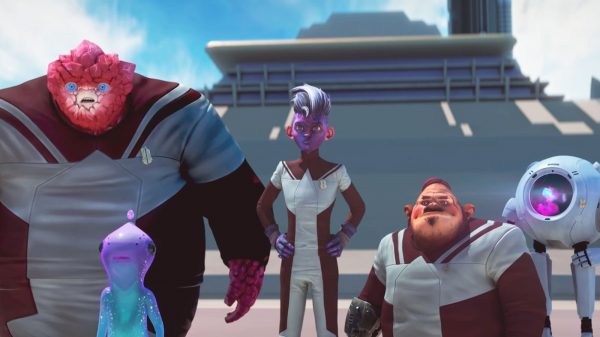
Star Trek: Prodigy Season 2 sneak peek reveals the surprise return of a Voyager castmember
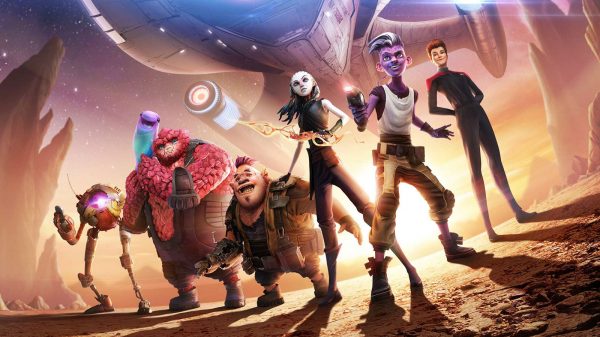
Star Trek: Prodigy canceled, first season to be removed from Paramount+
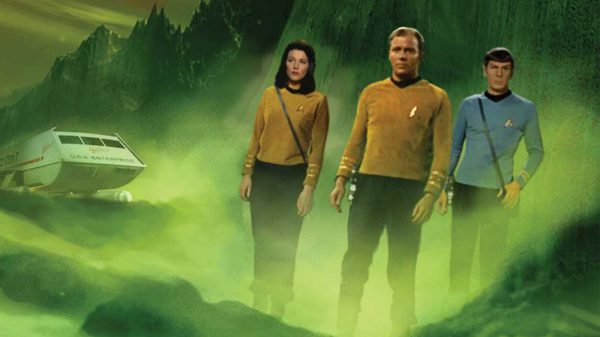
Revisiting “Star Trek: Legacies – Captain to Captain” Retro Review
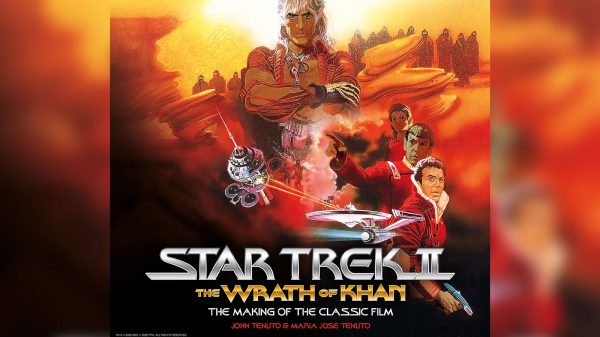
The Wrath of Khan – The Making of the Classic Film Review: A gem for your Star Trek reference collection
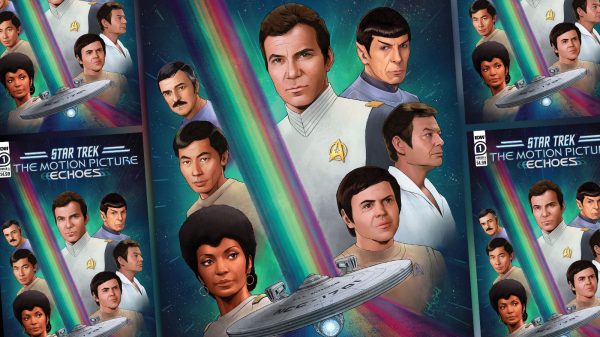
The events of Star Trek: The Motion Picture to continue in new IDW miniseries “Echoes”

Star Trek: The Original Series “Harm’s Way” Book Review

William Shatner’s New Book ‘Boldly Go: Reflections on a Life of Awe and Wonder’ Review: More of a good thing
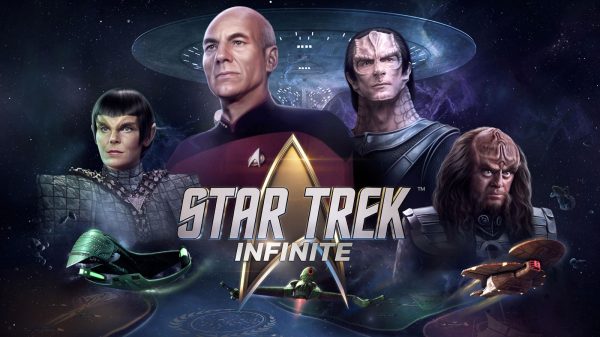
Star Trek: Infinite release date + details on Lower Decks-themed pre-order bonuses
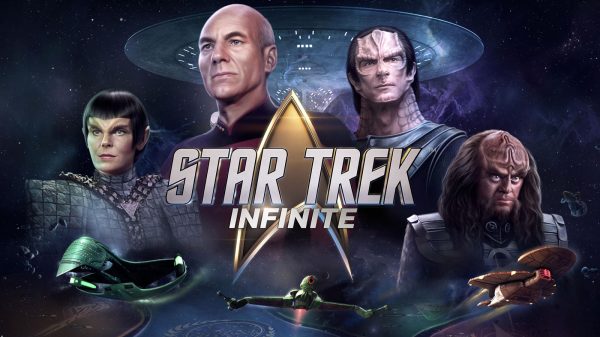
‘Star Trek: Infinite’ strategy game revealed, set to be released this fall
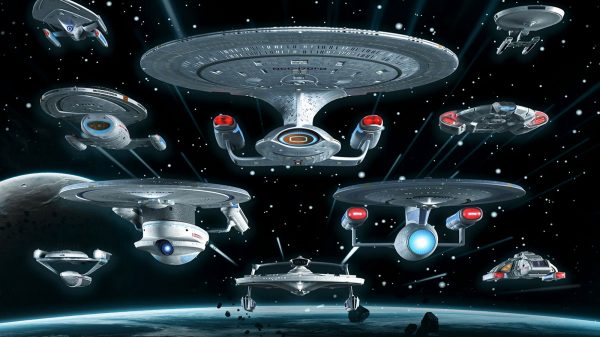
Hero Collector Revisits The Classics in New Starfleet Starships Essentials Collection
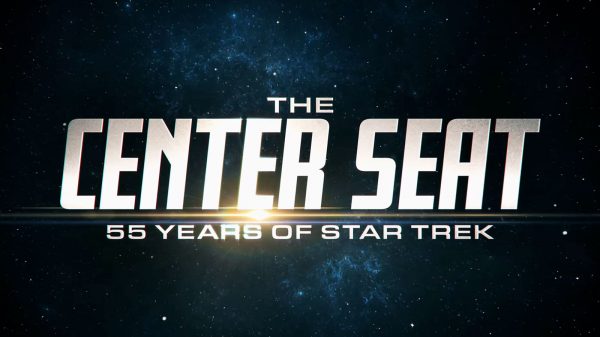
New Star Trek Docuseries ‘The Center Seat’ Announced, Coming This Fall
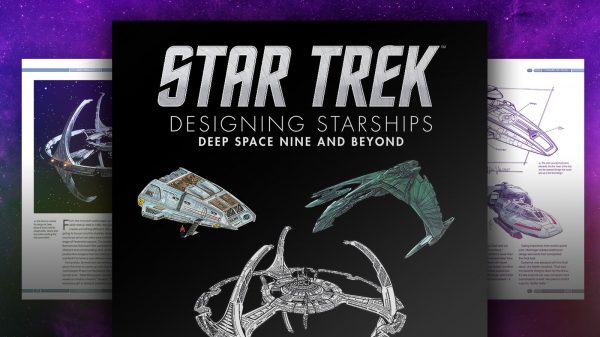
Star Trek Designing Starships: Deep Space Nine & Beyond Review: a Deep Dive Into Shuttlecraft of the Gamma Quadrant
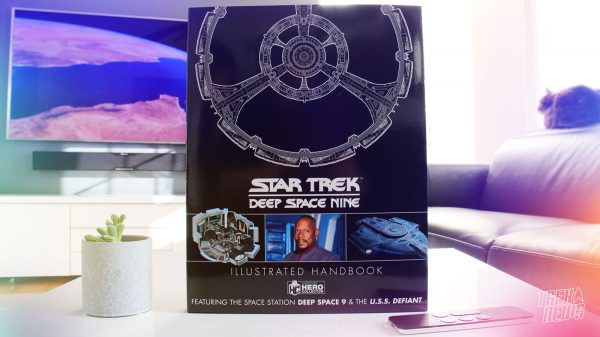
Star Trek: Deep Space Nine Illustrated Handbook Review: Terok Nor Deconstructed in Amazing Detail
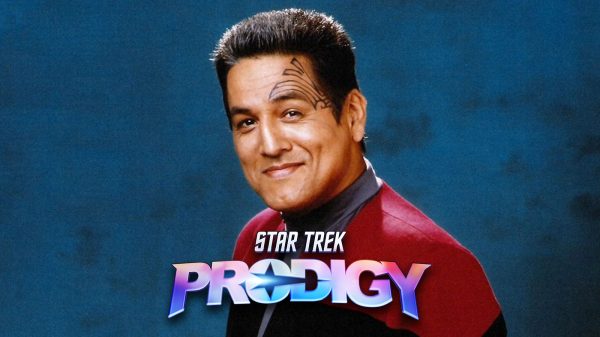
Robert Beltran Is Officially Returning to Star Trek as Chakotay on ‘Prodigy’ + More Casting News
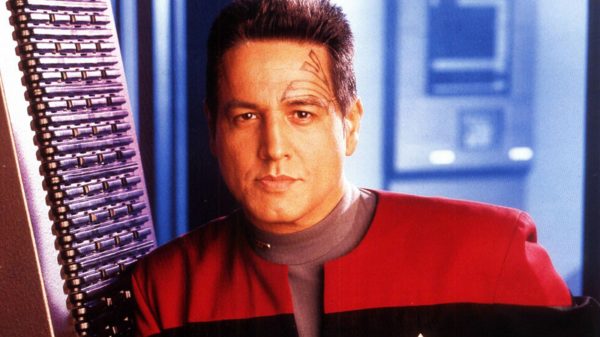
Robert Beltran Says He’s Returning to Star Trek in ‘Prodigy’

John Billingsley Talks Life Since Star Trek: Enterprise, Going to Space and Turning Down Lunch with Shatner and Nimoy
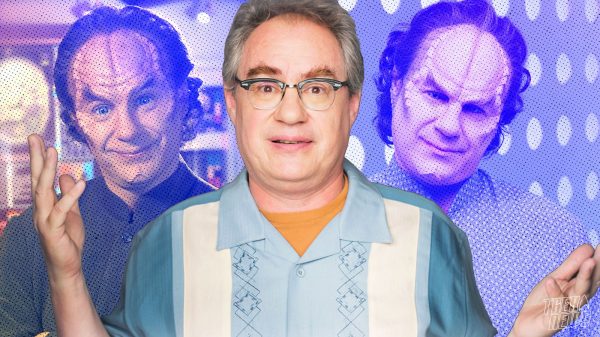
Star Trek: Enterprise Star John Billingsley Talks Charity Work, Upcoming TREK*Talks Event
Review: Star Trek: Discovery Season 5 Episode 6 “Whistlespeak”
It’s been a while since a Starfleet crew thoroughly discombobulated a native population, and that’s exactly what the Discovery crew does in this week’s episode.
After hundreds of tests on the vial Michael Burnham ( Sonequa Martin-Green ) retrieved from the I.S.S. Enterprise , the crew learns it contains something incredibly… well, boring: clean water. But thanks to some sleuthing, there’s a much greater significance to the water than meets the eye.
You see, Doctor Kovich ( David Cronenberg ), at home in his white infinity, shares with Burnham a list of all scientists who were involved in hiding the Progenitor tech. With the clues hidden by Jinaal Bix, Carmen Cho, and Dr. Vallek already found, that leaves Hitoroshi Kreel, a Denobulan, and Marina Derex, a Betazoid. Burnham deduces the water vial is the product of Kreel, as the scientist’s specialty was designing weather towers to generate rain. Zora ( Annabelle Wallis ) helps Burnham, Paul Stamets ( Anthony Rapp ), and Sylvia Tilly ( Mary Wiseman ) deduce the water in the vial is representative of one planet, Halem, so that’s where Discovery heads next.
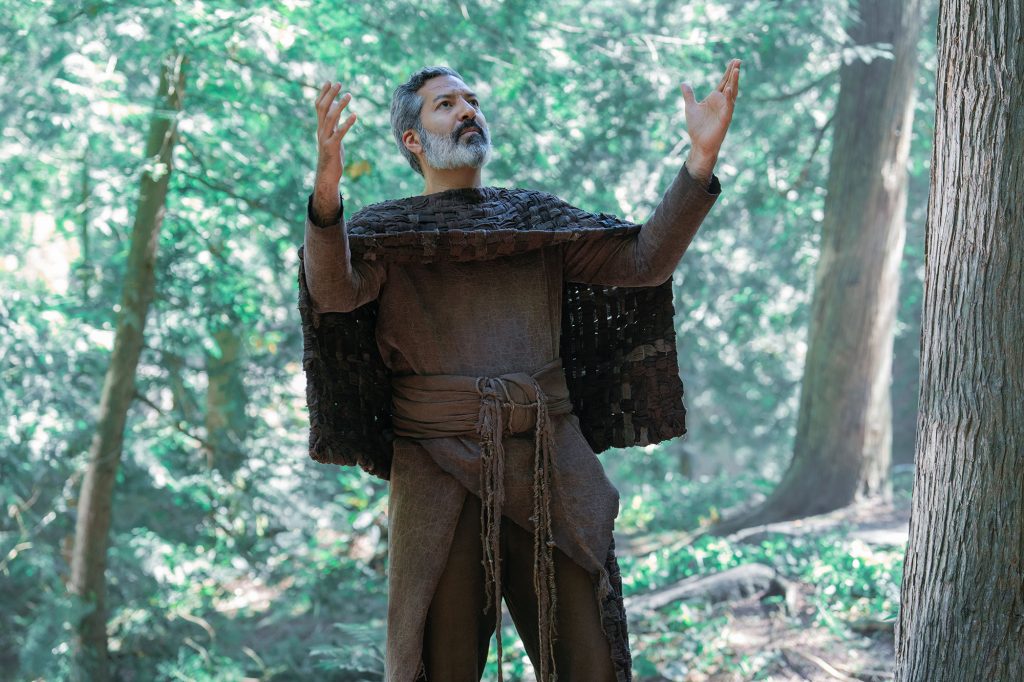
First, let’s talk about Kovich, who the writers for this season are trying to seem even more mysterious than before. Kovich in this episode uses a 21 st -century legal pad to provide Burnham with the list of scientists, and claims he procured such an oddity by being “resourceful.” Just who is this guy? Hopefully, Kovich’s true nature will be revealed before the end of this show; we sincerely hope this character isn’t just quirky for the sake of being quirky, and that he plays a larger role in Discovery ’s overarching story.
Before transporting to the only weather tower still operating on Halem, the crew learns a bit about the native, pre-warp, pre-industrial population. The Prime Directive is in play here, as Kreel disguised the weather tower as a mountain to avoid exposing the natives to outsiders, and now Discovery’s crew needs to follow the same example. The tower functions as a place where Halem’nites go to commune with their gods, so accessing the mountain will be tricky.
“You can learn so much about a society by how the individuals speak to one another.” – Burnham, on the Halem’nites
The humanoids on Halem communicate both via traditional language, and “whistlespeak,” a form of communication that is inclusive, progressive, surprisingly articulate, and allows longer-range communications than traditional phonetic language. All signs point to the natives being a welcoming society.
After helping rescue and escort a group of Halem’nites from outside the weather tower’s safe perimeter into the habitable zone, Burnham and Tilly quickly incorporate themselves well enough into the motley local community as visitors from afar. The Starfleet pair soon enter themselves into a competition that judges who can gain access to the High Summit – a race to the water tower that serves as a test of devotion to the Halem’nites’ gods. Before the race, the pair also encounter a native, Ravah ( June Laporte ), daughter of the Summit’s priest, Ohvahz ( Alfredo Narciso ), and the young native befriends them despite also being a challenger in the race.
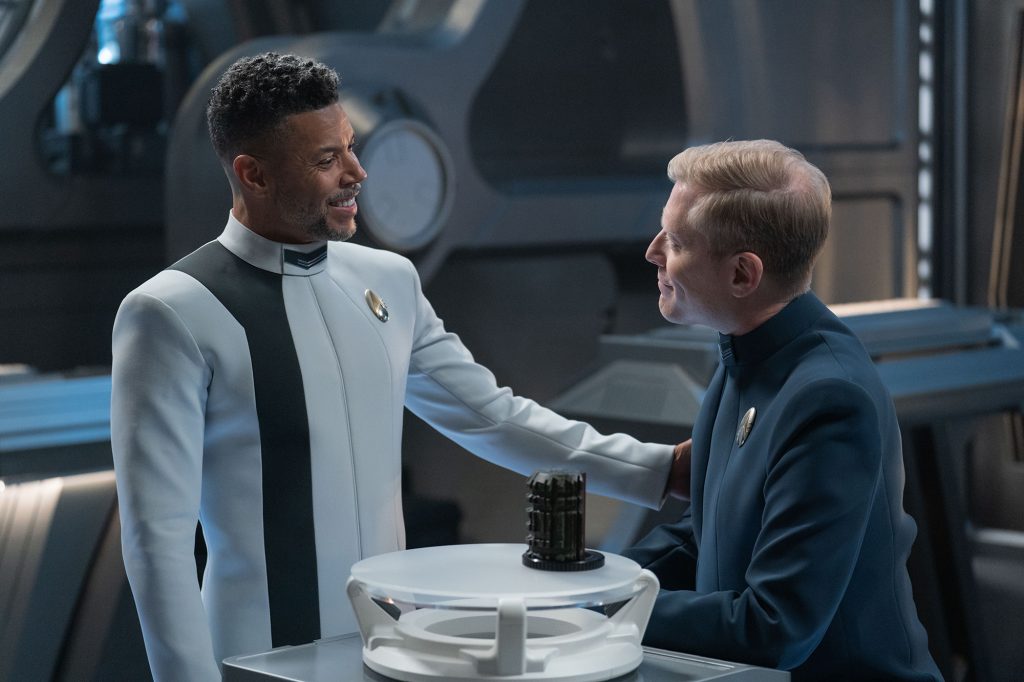
On the morning of the race, Burnham checks in with Discovery , where Ensign Adira Tal ( Blu del Barrio ) found other now-defunct weather towers across the planet. The other towers stopped working due to energy issues, and that’s what’s happening now with the High Summit, which means the Halem’nites Burnham and Tilly just started to get to know are in grave danger. The only way to stop the High Summit from failing is if the away team can find an auxiliary control panel somewhere near the High Summit and restart it. As if there wasn’t enough burden on Burnham’s shoulders.
Considering the Halem’nites are constantly fighting thirst because of their planet’s general aridness, the competitors are subject to extreme thirst as they begin the race to the High Summit. As if running up a mountain wasn’t trying enough. Partway through the challenge, Burnham miraculously notices a point on the race trail where she thinks the auxiliary console is located, and drops out of the competition to pursue the lead. Sure enough, she finds and restarts the console, thanks to assistance from Ensign Tal, which strikes one mission objective off their list.
Tilly is heading toward her own disqualification from the race, if not for the support from Ravah. Soon enough, both Tilly and Ravah make it within striking distance of the finish line, and Tilly returns the favor by helping Ravah limp across in a show of good sportsmanship. Good for Tilly, but this just means both are now heading to the High Summit, which as we see shortly is not the enlightenment we were led to believe.
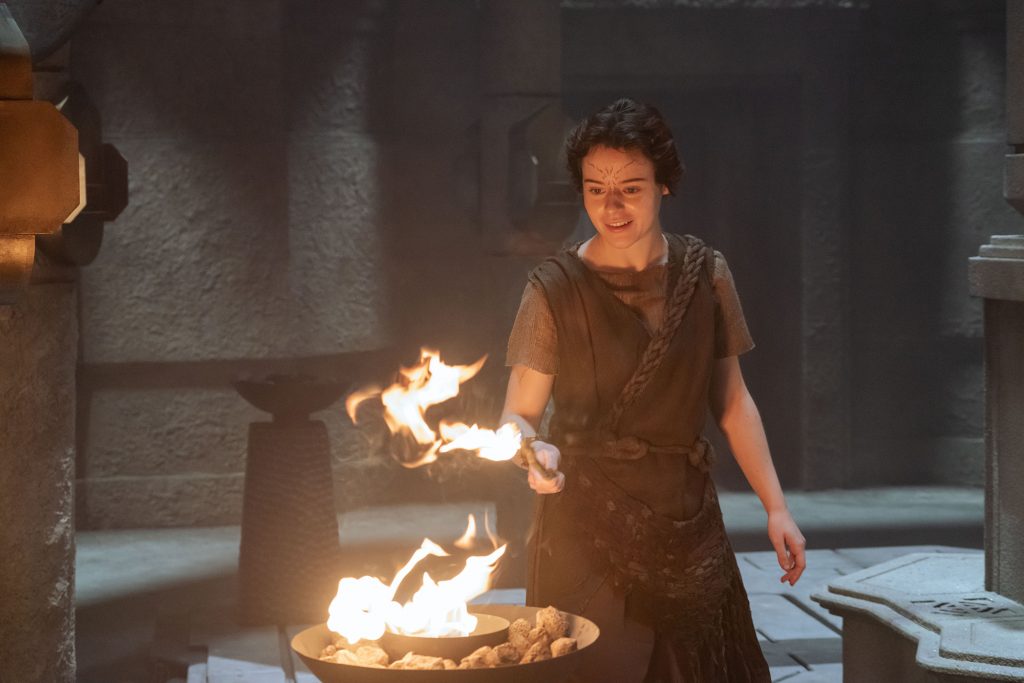
The winners of the race get to be close to gods who are supposed to bring rain to the natives. Burnham and Tilly know the weather station is actually responsible for bringing good weather, but the Halem’nites think something different: a human sacrifice in the heart of the High Summit is what does the trick. This twist is reminiscent of a similar sacrificial heart-dropping reveal in Strange New Worlds’ “ Lift Us Where Suffering Cannot Reach ,” and suddenly the stakes are much higher for Burnham, who has to rescue Tilly and Ravah from a needless death – even if it violates the Prime Directive.
“Are there no gods? Are there… what is there?” “There is still what you believe. Nothing we have shown you means gods don’t exist.” – Ohvahz and Burnham
While they await their sacrifice, Tilly and Ravah bond over their struggle, and Ravah describes some peculiar numerical markings on the wall of the chamber, which both represent the five serenity prayers within Halem culture and the five weather towers across the planet. Tilly recognizes the fifth symbol as the same as being on the vial back on Discovery , but the revelation may not matter, as suffocation threatens to take Tilly and Ravah both.
Despite the enormous consequences of revealing the existence of people not from Halem, never mind the reveal of the High Summit not just being a tool of the gods, Burnham flips off the Prime Directive and reveals herself to Ohvahz so she can rescue the innocent people trapped inside the High Summit. She convinces Ohvahz that her extraterrestrial story is legit, and that the High Summit is actually a piece of technology – no small discovery for the native.
Should Burnham have blatantly violated the Prime Directive in this way? Of course not, but let’s be honest: the Prime Directive really is more of a guideline than a rule for the protagonists in Star Trek shows. We hope Burnham faces some discipline for this flagrant violation of Starfleet’s most sacred rule. In any case, Burnham breaking the Prime Directive ultimately means the Halem’nites need to start to embrace a major societal change. The ritual race to the High Summit won’t have as much meaning anymore now that they know the rain will come no matter what, but as Burnham suggests, perhaps there are plenty of Helem’nites who are ready for a change. As Ohvahz notes to his daughter, “Perhaps devotion means being able to hear when the gods tell us something new.” This is as great a lesson as any Star Trek episode can offer.
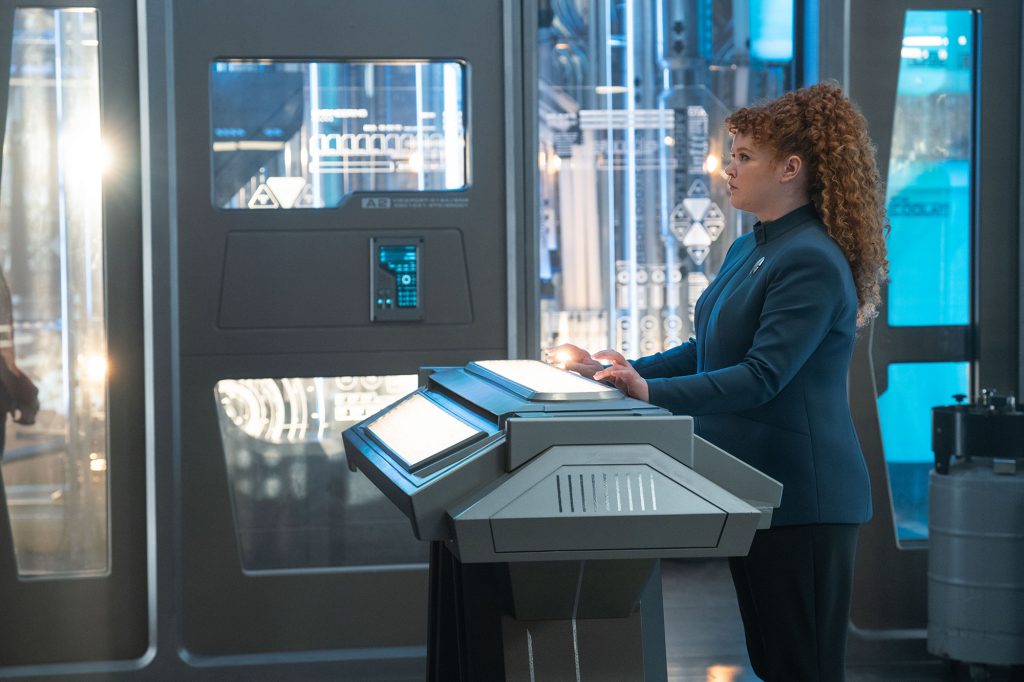
With the weather tower repaired and two peoples’ lives saved from a needless sacrificial death, the Discovery crew retrieves the next clue from one of the planet’s other water towers. Near the end of the episode, Burnham and Tilly ponder the meaning of finding the clue in a water tower, and they reason that technology can be powerfully dangerous in the wrong hands, and they need to be careful when they find the Progenitor’s tech. And just on schedule, the crew learns of Moll and L’ak’s most recent whereabouts, but that’ll have to wait until next week.
Elsewhere in this episode, Doctor Hugh Culber ( Wilson Cruz ) is still struggling with explaining and processing the spiritual awakening he has had following his experiences in “ Jinaal .” His partner, Paul Stamets, doesn’t seem to quite get what Culber is going through, and not even “grief alleviation therapy” – where a holographic version of Culber’s wise grandmother can have conversations with the doctor – can help.
The person who does offer some welcome perspective and emotional support is Cleveland Booker ( David Ajala ). Book asserts that Culber’s spiritual awakening, and accompanying emotional turbulence, is just as important as anybody else’s journey – and that’s all we’ll get from Culber’s multi-episode arc for now. After a few episodes of marginal development, hopefully, something happens with this subplot soon, or else we’re going to start to lose interest. But while Culber’s arc may seem tangential at times, his search for meaning resonates with the overarching themes of identity and purpose woven throughout the series.
So, as the Discovery crew continues their quest for the Progenitors’ technology, they are reminded of the potential dangers that come with wielding such power. It is a sobering realization that underscores the responsibility they bear as guardians of advanced technology in a universe fraught with conflict and peril.
With each episode, this season invites viewers to contemplate the complexities of morality, identity, and the ever-evolving nature of progress. As the crew inches their way toward the ultimate treasure, “Whistlespeak” remains true to one overarching theme of this show: the true measure of humanity lies not in adherence to rules, but in our capacity for compassion and understanding in the face of uncertainty and adversity. That seems to be what this show is all about, yeah?
Stray Thoughts:
- Why didn’t it occur to Culber, a doctor, sooner that he should run a series of tests on his body, as his grandmother suggests, to determine if there’s something medically wrong with him.
- Tilly drops a couple hints about what is going on at Starfleet Academy nowadays, and it’s not a rosy picture. The Academy isn’t giving the cadets “what they need,” so perhaps these conflicts will be at play in the upcoming Starfleet Academy show?
- Why do video games in the 32nd century look no better than Space Invaders ?
New episodes of Star Trek: Discovery stream Thursdays on Paramount+ , this season stars Sonequa Martin-Green (Captain Michael Burnham), Doug Jones (Saru), Anthony Rapp (Paul Stamets), Mary Wiseman (Sylvia Tilly), Wilson Cruz (Dr. Hugh Culber), David Ajala (Cleveland “Book” Booker), Blu del Barrio (Adira) and Callum Keith Rennie (Rayner). Season five also features recurring guest stars Elias Toufexis (L’ak) and Eve Harlow (Moll).
Stay tuned to TrekNews.net for all the latest news on Star Trek: Discovery , Star Trek: Prodigy , Star Trek: Strange New Worlds , Star Trek: Lower Decks , and more.
You can follow us on X , Facebook , and Instagram .

Kyle Hadyniak has been a lifelong Star Trek fan, and isn't ashamed to admit that Star Trek V: The Final Frontier and Star Trek: Nemesis are his favorite Star Trek movies. You can follow Kyle on Twitter @khady93 .

Your email address will not be published. Required fields are marked *
Trending Articles

Review: Star Trek: Picard – Firewall Seven of Nine, a heroine who has resurged in popularity thanks to Jeri Ryan’s return to the franchise...

An article celebrating the longevity of the Star Trek franchise has given us our first look at Michelle Yeoh’s upcoming Star Trek: Section 31...

Preview: Star Trek: Discovery 505 “Mirrors” The fifth episode of Star Trek: Discovery’s fifth and final season “Mirrors” premieres this Thursday, April 25. The...

Star Trek: Discovery Season 5 stumbles with “Jinaal” Discovery’s voyage to the ultimate treasure brings Captain Michael Burnham and her crew to Trill, where...

IMAGES
VIDEO
COMMENTS
The Star Trek galaxy explained that the Gamma quadrant includes several Star Trek planets such as Brax, Yadera, Meridian, and others. As seen in Deep Space Nine, the Quadrant also houses the Dominion, an aggressive ensemble of several alien species commanded by the shape-shifting Changelings (AKA the Founders).Several territories of the quadrant are under the Founders' control even though they ...
The Star Trek Star Charts further locate in the Alpha Quadrant the First Federation, Breen, Ferengi, Tzenkethi, Cardassians, Bajorans, Talarians, and Tholians . Star Trek VI: The Undiscovered Country implies that the Alpha/Beta border runs through, or is relatively close to, Federation space. The Star Trek Encyclopedia attributes this decision ...
Furthermore, according to the Star Trek Encyclopedia, Earth marks the border between the Alpha Quadrant and the Beta Quadrant. The display graphic on a PADD in Star Trek: Insurrection would seem to confirm this. Dialogue in Star Trek: Voyager and Star Trek: Deep Space Nine, however, firmly establish that Earth is located on the Alpha Quadrant ...
Deep Space Nine, a space station located near the Bajoran wormhole, was a focal point of the Alpha Quadrant during the events of Star Trek: Deep Space Nine. It served as a hub for trade, diplomacy, and conflict between the Federation, the Klingon Empire, and the Romulan Star Empire.
The map above is Shakaar's Alpha/Beta map v3.3; a fan-made creation showing the Alpha and Beta quadrants of the Star Trek universe. The map shows both major and minor powers that have appeared in the various series over the years. At the centre is the United Federation of Planets, which borders the major power of the Klingon Empire, Roman ...
1. The four quadrants. Already in the era of Classic Trek, the expression "quadrant" was used for the exact determination of positions in the Star Trek universe. However, this cartographic term which literally refers to "a quarter" was used for completely different three-dimensional volumes at that time: sometimes a quadrant indeed corresponded ...
on The Map Room blog The Map Room Star Trek. put to print or screen. Star Trek. Memory Alpha. Star Trek Star Trek Star Trek: Deep Space Nine. Learn more. With the third season of 'Star Trek ...
The Star Trek Gamma quadrant was only partially explored until a wormhole was found in the Bajor area in the Alpha quadrant, which allowed for more extensive exploration.. It made it possible for individuals from Alpha to get to Gamma without having to spend years and years traveling.. The Federation was able to communicate with the Dominion via this wormhole, which was dubbed the Bajoran ...
The Star Trek Universe is complicated. The main area (The Milky Way) is split into Quadrants. What are they? How were they created? What is in them? Todays v...
The in-game map of the apocryphal Star Trek Online video game, depicting Klingon and Romulan space in the Beta Quadrant. In most reference works, novels, and games, Klingon and Romulan space are usually depicted or stated to be located solely in the Beta Quadrant.This would make the Federation the only government spanning both quadrants. The video game Star Trek Online is largely faithful to ...
An overview of the entire galaxy. Gamma Quadrant. The Gamma Quadrant was first surveyed by the Quadros-1 probe, launched during the 22nd century. After initial discovery of the Bajoran Wormhole in 2369 extensive exploration began, which unfortunately also led to one of the most devastating wars in Federation history: The Dominion War. Local Space.
Star Trek was almost entirely set in our Milky Way galaxy.. Earth was in the Alpha quadrant along with most of Federation space and the home planets of the Ferengis, Cardassians and Bajorans. One end of the Bajoran wormhole (featured in Deep Space 9) is also in the Alpha quadrant.
The Gamma Quadrant was the common designation for one-quarter of the Milky Way Galaxy. This quadrant was adjacent to the Alpha Quadrant and to the Delta Quadrant. One-quarter of the galactic core was located in this quadrant. The Denkiri Arm was located in this quadrant. (TNG: "The Price"; Star Trek: Voyager, Season 7 production art [1]) Vash commented that some of the cultures she had ...
A brief history of the Alpha and Beta Quadrants, exploring major and minor powers. Based in the Universe of Star Trek, created by Gene Roddenberry. **Please ...
The Wormhole of Star Trek: Deep Space Nine is a galactic doorway between the Alpha and Gamma Quadrants. In season 1, episode 1, "The Emissary," Bajoran spiritual leader Kai Opaka (Camille ...
Select a quadrant to view ... Map of the Galaxy Select a quadrant to view ... Buy the book at Amazon.com Star Trek Star Charts: The Complete Atlas of Star Trek ... Star Trek Star Charts: The Complete Atlas of Star Trek =/\\= Today is Stardate 77766.8: E-mail questions or comments ...
Most of the action in Star Trek takes place in the real-world Milky Way Galaxy which is roughly divided into four quadrants, named after the first four letters of the Greek alphabet: Alpha, Beta, Gamma, and Delta. These are the galactic regions that include significant planets like Vulcan, Qo'noS, and of course, Earth. While Gamma and Delta still bear planets with ominous origins, the Alpha ...
Voyager struck a forceful blow against the Collective as the starship returned to Earth, but the Borg continued to inspire dread throughout known space. Even in the Star Trek: Picard-era, a scientist expressed concerns that the captured Borg cube in Romulan space might reconnect with the Queen's group consciousness and wreak untold havoc.
The Delta Quadrant was the common designation for one-quarter of the Milky Way Galaxy. This quadrant was adjacent to the Beta Quadrant and to the Gamma Quadrant. The quadrant's closest point to the United Federation of Planets was located in the galactic core, which was located approximately thirty thousand light years away. (Star Trek: Voyager, Season 7 production art [1]) The Delta Quadrant ...
"Galactic quadrants" within Star Trek are based around a meridian that runs from the center of the Galaxy through Earth's Solar System, which is not unlike the system used by astronomers. However, rather than have the perpendicular axis run through the Sun, as is done in astronomy, the Star Trek version runs the axis through the galactic center.
The Dominion confined a Breen in Internment Camp 371 as part of its bid to infiltrate the Alpha Quadrant, but the prisoner was killed in an escape attempt. ... secretive. In the 2370s, Worf asserts that the Breen are without honor and do not tolerate incursions into their space ... Star Trek: Discovery Seasons 1-4 are streaming exclusively on ...
In Star Trek VI: The Undiscovered Country, Captain Hikaru Sulu (George Takei) concludes a three-year mission to learn more about gaseous planetary anomalies in the Beta Quadrant. Yet, The ...
Speaking with The Space Review in 2019, "Star Trek: The Original Series" technical advisor Kellam de Forest explained that the futuristic calendar system was inspired by the Julian day — the ...
In Star Trek: Deep Space Nine, Sisko is responsible for the discovery of a wormhole near Bajor that is stable on both sides, allowing travel to and from the Gamma Quadrant. This discovery is a ...
The in-game map of the apocryphal Star Trek Online video game, depicting Klingon and Romulan space in the Beta Quadrant. In most reference works, novels, and games, Klingon and Romulan space are usually depicted or stated to be located solely in the Beta Quadrant.This would make the Federation the only government spanning both quadrants. The video game Star Trek Online is largely faithful to ...
Star Trek: Discovery season 5, episode 6, "Whistlespeak" reveals that Star Trek: Enterprise's Denobulan species, popularized by Dr Phlox (John Billingsley), played a hugely important role in the future of Starfleet and the Federation.The latest clue to the Progenitors' treasure is located on the planet Halem'no, a pre-warp planet which has been given a subtle helping hand from the Denobulans.
Each quadrant was divided into thousands of sectors. The Galactic core was the intersection of all four quadrants. (TNG: "The Price"; Star Trek VI: The Undiscovered Country; VOY: "Pathfinder") In the mid-22nd century, scientists estimated that one out of every 43,000 planets in the galaxy supported intelligent lifeforms.
Star Trek Designing Starships: Deep Space Nine & Beyond Review: a Deep Dive Into Shuttlecraft of the Gamma Quadrant. Star Trek: Deep Space Nine Illustrated Handbook Review: Terok Nor Deconstructed ...